Creating a sensory room transforms ordinary spaces into therapeutic environments that support emotional regulation, sensory processing, and overall well-being. These specially designed spaces serve individuals with autism, ADHD, sensory processing disorders, and anyone seeking calm or stimulation. From underwater themes that captivate young minds to weighted therapy zones that provide deep pressure comfort, each sensory room concept offers unique benefits. Whether you're designing for home, school, clinic, or therapy center, these 25 comprehensive sensory room ideas blend innovative equipment, thoughtful lighting, and purposeful layouts to create immersive environments that promote healing, learning, and relaxation.
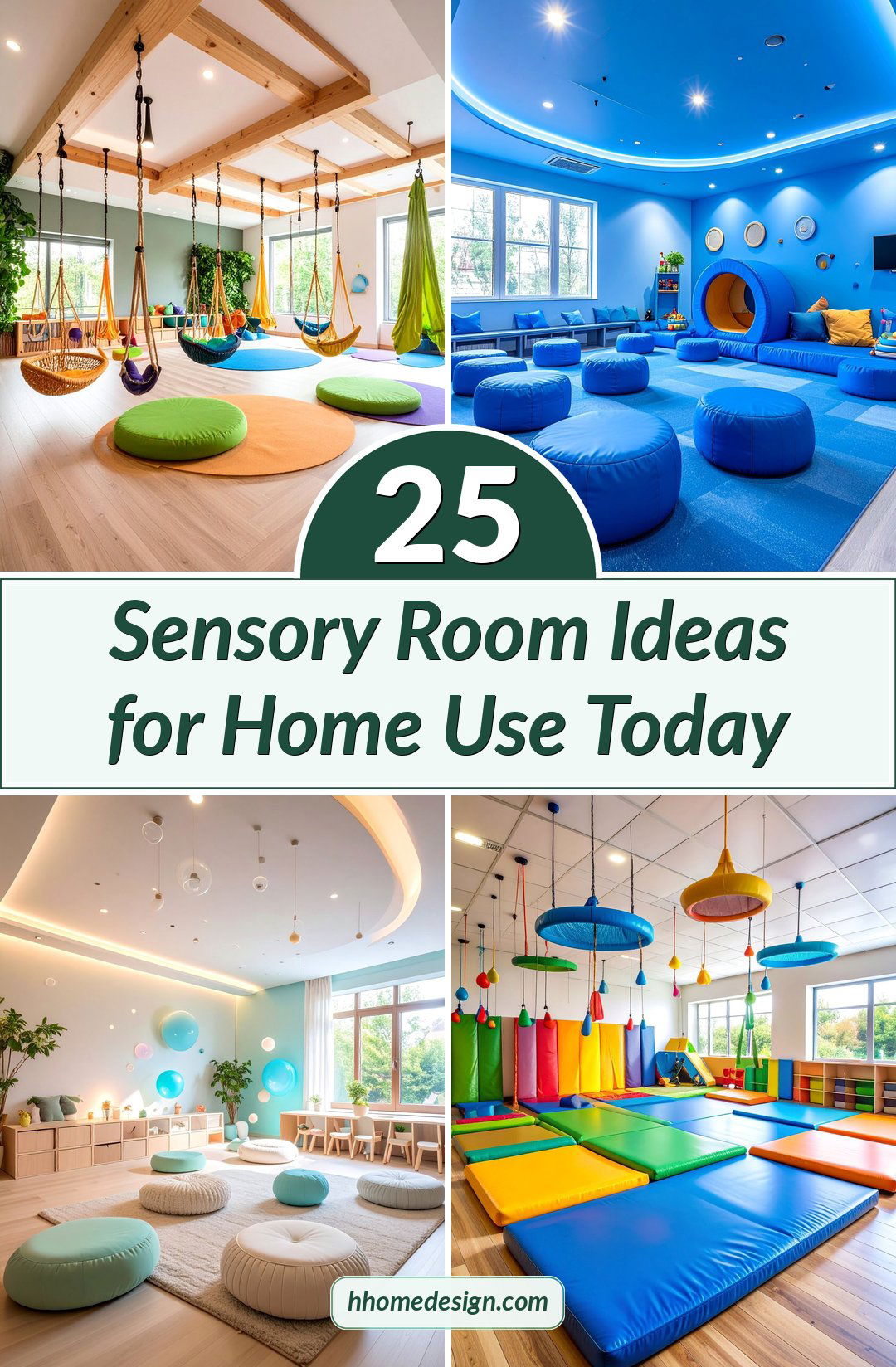
1. Calming Underwater Sensory Room with Bubble Therapy
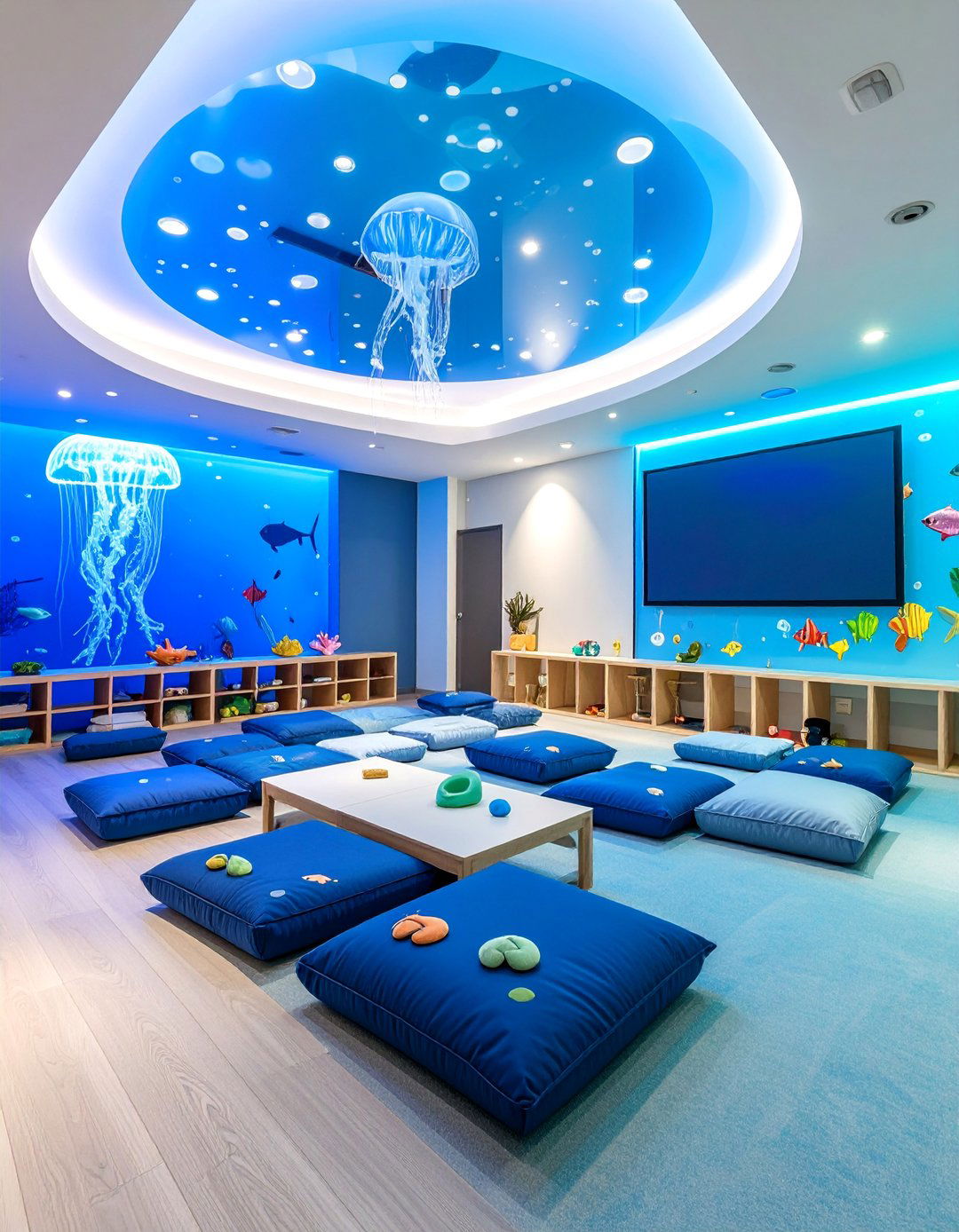
An underwater-themed sensory space creates a mesmerizing aquatic environment using bubble tubes, jellyfish fiber optics, and ocean projection effects. The centerpiece features a large bubble tube with swimming fish, surrounded by curved mirrors to amplify the underwater illusion. Soft blue LED lighting cascades across walls decorated with coral reef decals and marine life murals. Bean bag seating covered in sea-green fabric provides comfortable viewing positions. Ocean sound effects play through hidden speakers while aromatherapy diffusers release calming sea breeze scents. Interactive jellyfish fiber optic strands offer safe tactile exploration. The room includes weighted lap pads shaped like sea creatures for deep pressure therapy. This comprehensive design promotes visual tracking, reduces anxiety, and creates an immersive escape that supports sensory regulation through captivating marine-themed elements.
2. Active Sensory Room with Vestibular Movement Equipment
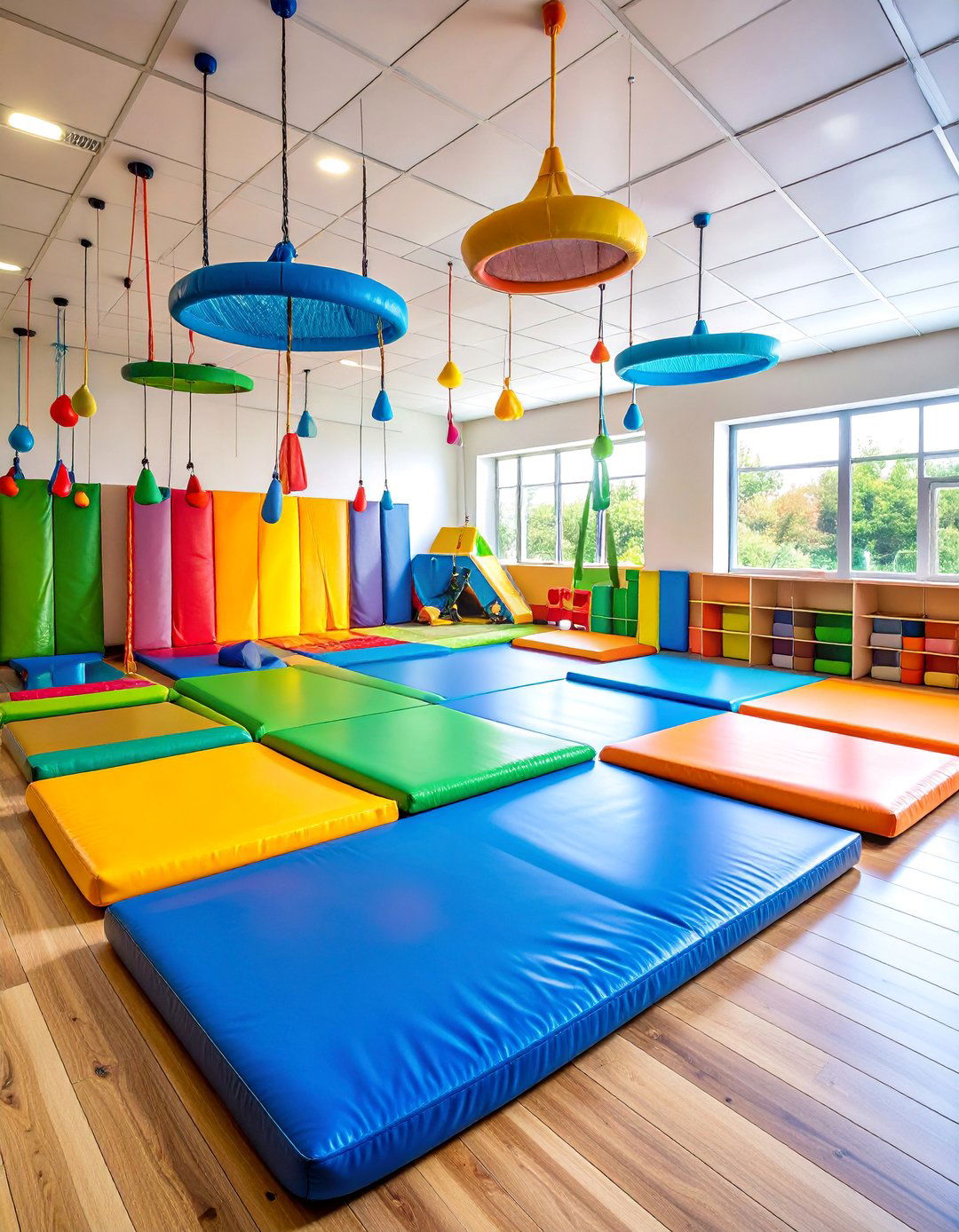
This dynamic sensory room focuses on movement and proprioceptive input through specialized equipment designed for sensory seekers. The space features multiple therapy swings including lycra compression swings, platform swings, and suspended therapy balls. A mini trampoline with safety handles provides controlled bouncing opportunities while crash mats ensure safe landings. Balance beams, stepping stones, and wobble cushions create obstacle courses for motor planning development. Climbing structures with soft padding encourage vertical movement and body awareness. The flooring combines various textures including textured mats, balance pods, and sensory tiles. Bright, energizing colors stimulate visual processing while upbeat instrumental music supports active engagement. Storage cubbies hold fidget tools, therapy balls, and resistance bands. This comprehensive movement-based environment helps children discharge excess energy while developing coordination, balance, and spatial awareness through structured sensory-motor activities.
3. Weighted Therapy Sensory Room for Deep Pressure Input
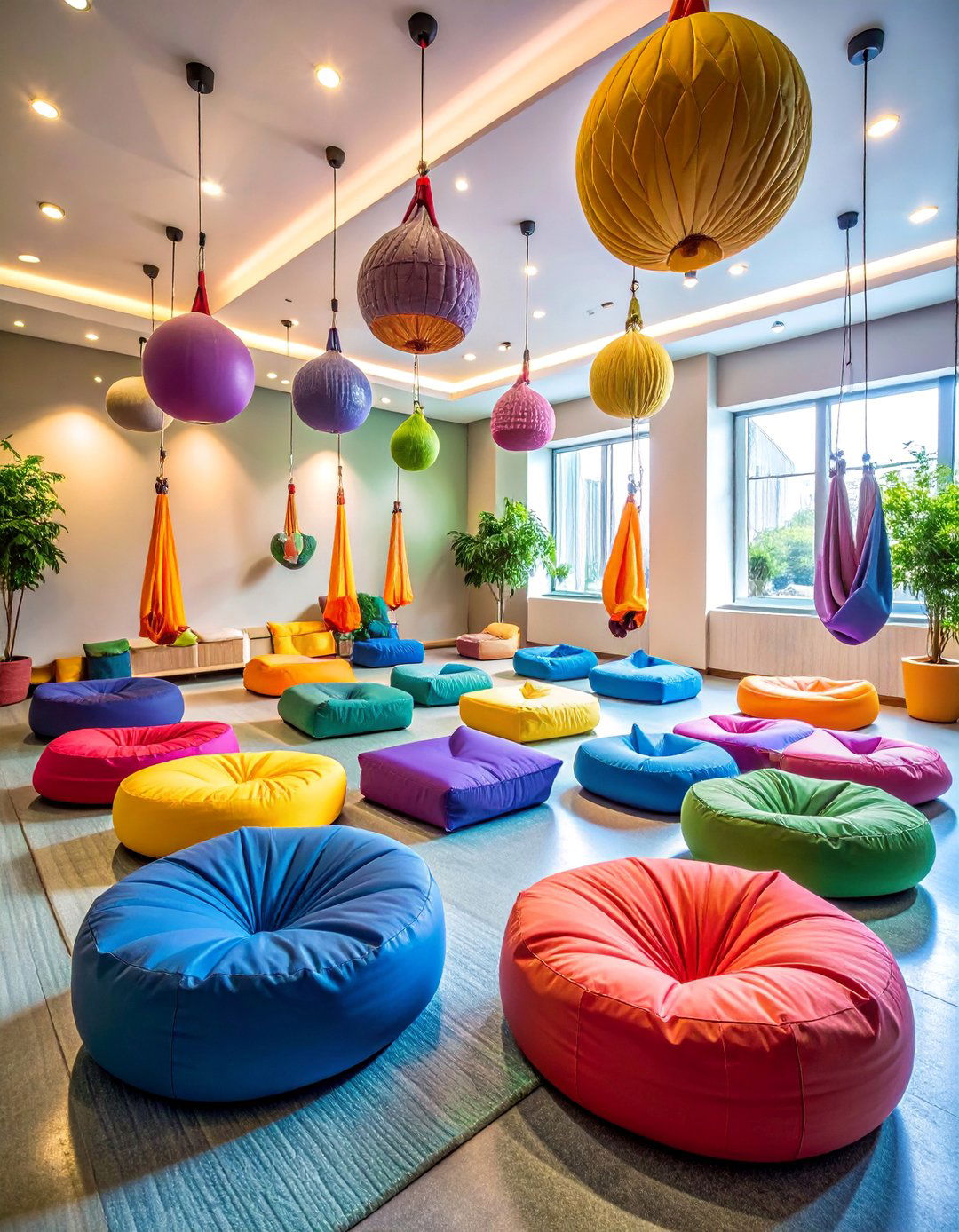
A specialized sensory room dedicated to deep pressure therapy features an array of weighted equipment designed to calm the nervous system. The centerpiece includes weighted blankets in various sizes, weighted vests, and compression garments organized on accessible shelving. A cozy reading nook with weighted lap pads encourages quiet activities while providing proprioceptive input. Compression swings and hugging chairs offer different pressure sensations for individual preferences. The room utilizes soft, muted lighting through adjustable LED strips and table lamps to maintain a calming atmosphere. Textured wall panels provide additional tactile input while soft carpeting adds comfort underfoot. Essential oil diffusers release lavender and chamomile scents to enhance relaxation. Bean bag chairs filled with weighted materials offer flexible seating options. This therapeutic environment helps individuals with anxiety, autism, and attention difficulties achieve emotional regulation through carefully calibrated pressure therapy equipment and supportive design elements.
4. Interactive Light Projection Sensory Room for Visual Stimulation
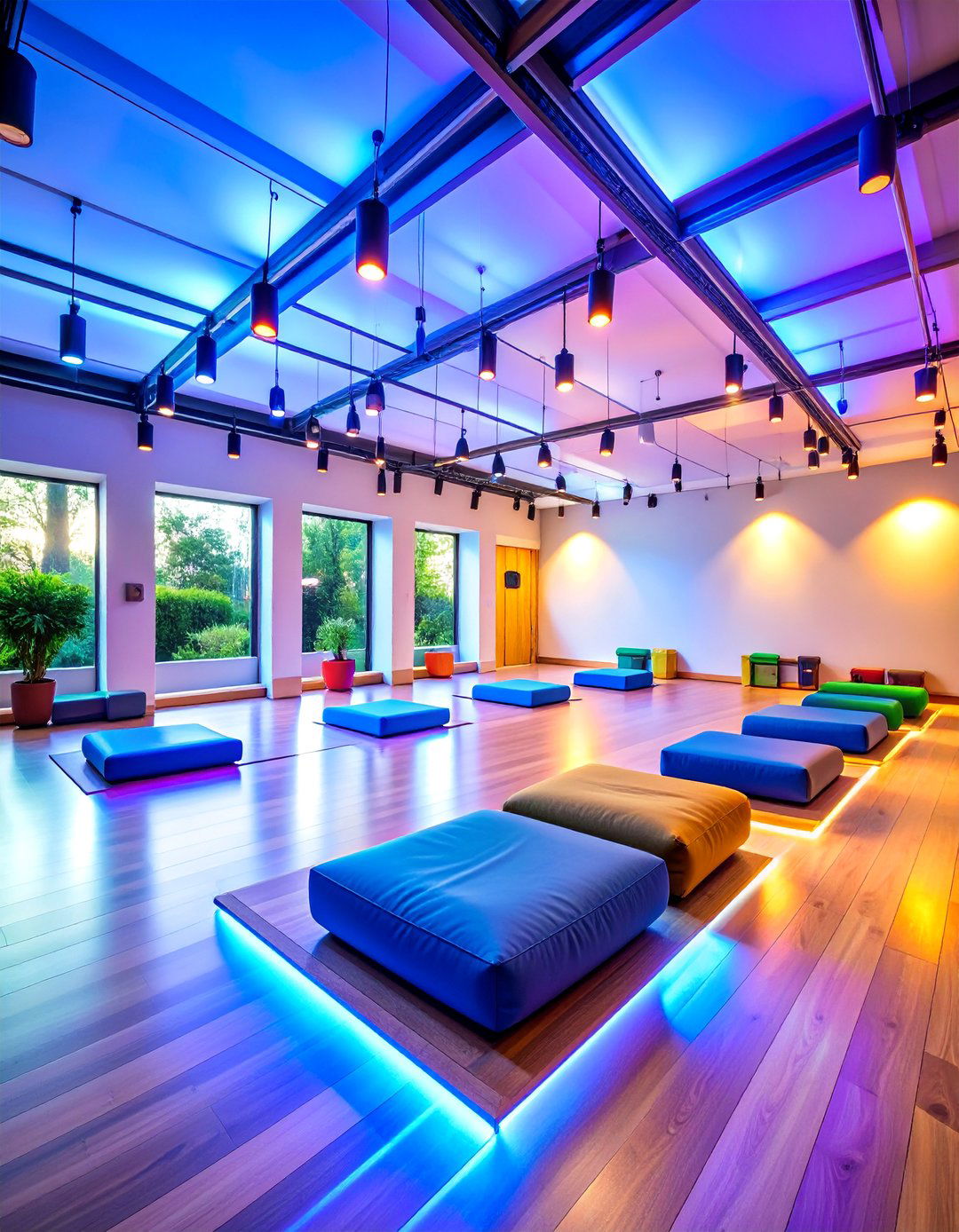
This cutting-edge sensory room utilizes advanced projection technology to create immersive visual experiences that respond to movement and touch. Interactive floor projectors transform the ground into responsive landscapes where users can step on virtual butterflies, create ripples in digital water, or paint with their movements. Wall-mounted projectors display calming nature scenes, abstract patterns, or educational content that changes based on user interaction. Fiber optic ceiling installations create a starry sky effect while color-changing LED strips allow users to control their environment through touch panels. Motion sensors trigger different visual effects as individuals move through the space. Comfortable floor cushions and bean bags provide optimal viewing positions for the projected content. Sound reactive lighting synchronizes with calming music to create multisensory experiences. This technologically advanced room promotes cause-and-effect learning, visual tracking skills, and engagement while offering endless customization possibilities for different therapeutic goals and user preferences.
5. Nature Forest Sensory Room with Organic Elements
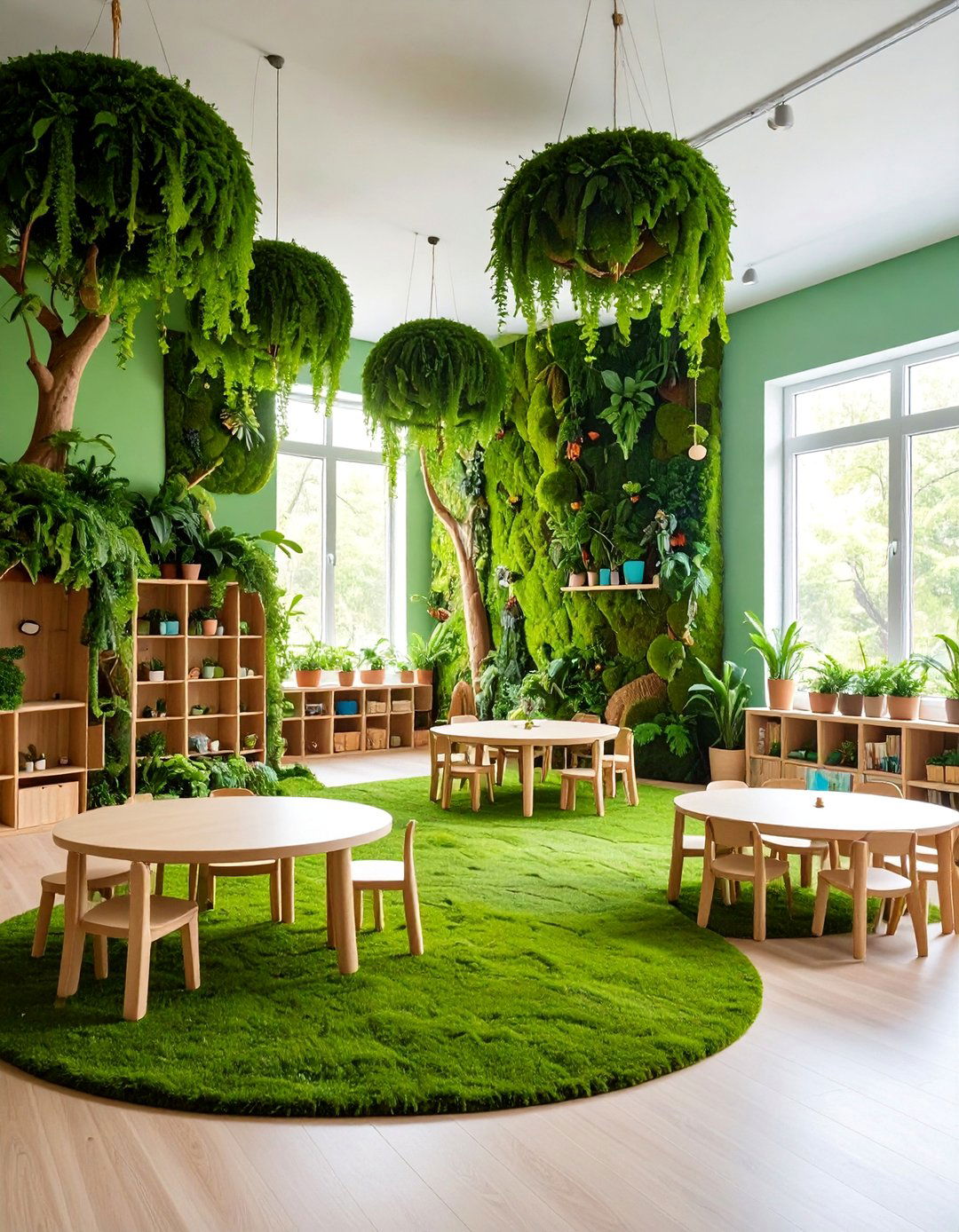
Transform your space into a tranquil forest sanctuary using natural materials, living plants, and earth-toned design elements. Artificial trees with textured bark provide climbing and hiding opportunities while hanging air plants and moss walls create authentic forest atmospheres. Natural wood furniture including tree stump stools and log benches offer organic seating options. The sensory wall features various natural textures like smooth river rocks, rough tree bark, and soft moss patches for tactile exploration. Forest sound effects including bird songs, rustling leaves, and gentle streams play through concealed speakers. Essential oil diffusers release pine, eucalyptus, and cedarwood scents to complete the woodland experience. Soft green lighting mimics dappled sunlight filtering through leaves. Natural fiber rugs and blankets add comfort while maintaining the organic theme. This biophilic design approach reduces stress, improves air quality, and connects users with nature's calming properties while supporting sensory processing and emotional regulation.
6. Autism-Friendly Sensory Room with Predictable Routines
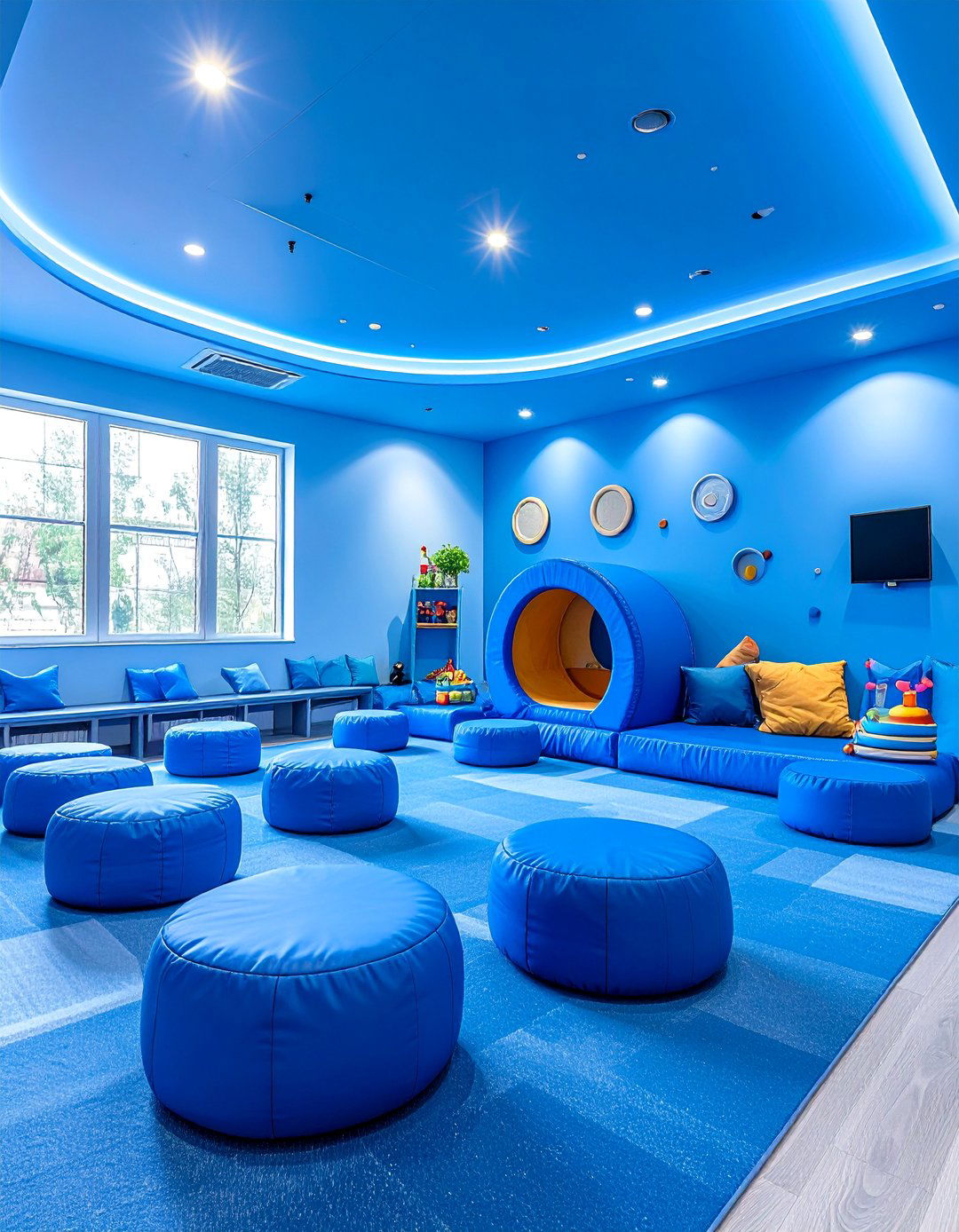
This sensory room specifically addresses the needs of individuals with autism through structured design, predictable elements, and clear visual supports. Visual schedules and picture cards guide room usage while designated zones clearly define different activities. Noise-canceling headphones and quiet corners provide retreat spaces during overwhelming moments. Consistent lighting through warm LED bulbs eliminates fluorescent flicker that can trigger sensitivities. Organized storage with labeled bins contains fidget tools, weighted items, and calming activities. The room features a predictable color scheme using calming blues and greens while avoiding overstimulating patterns. Bubble tubes with consistent light patterns provide visual regulation while textured wall panels offer safe stimming opportunities. Communication boards support non-verbal individuals while social stories explain room expectations. Timer systems help with transitions and time awareness. This carefully designed environment reduces anxiety through predictability while offering therapeutic sensory input that supports self-regulation and emotional well-being.
7. Sensory Room with Aromatherapy Integration and Scent Stations

A comprehensive aromatherapy-focused sensory room uses carefully selected scents to promote relaxation, alertness, or emotional regulation. Multiple essential oil diffusers throughout the space can be programmed for different therapeutic goals using lavender for calming, peppermint for alertness, or citrus for mood enhancement. Scent discovery stations allow users to explore different aromatherapy options through scratch-and-sniff boards and scented tactile materials. The room includes herb gardens with fragrant plants like mint, rosemary, and chamomile for natural scent exploration. Comfortable seating areas with washable covers accommodate sensitive individuals while allowing scent enjoyment. Air purification systems ensure clean circulation while scent intensity controls prevent overwhelming experiences. The lighting design uses soft, warm tones to complement the aromatherapy experience. Texture walls incorporate scented materials and aromatherapy-infused fabric panels. This specialized environment supports emotional regulation, memory development, and sensory exploration while teaching calming strategies through olfactory engagement and therapeutic scent association.
8. Music and Sound Therapy Sensory Room
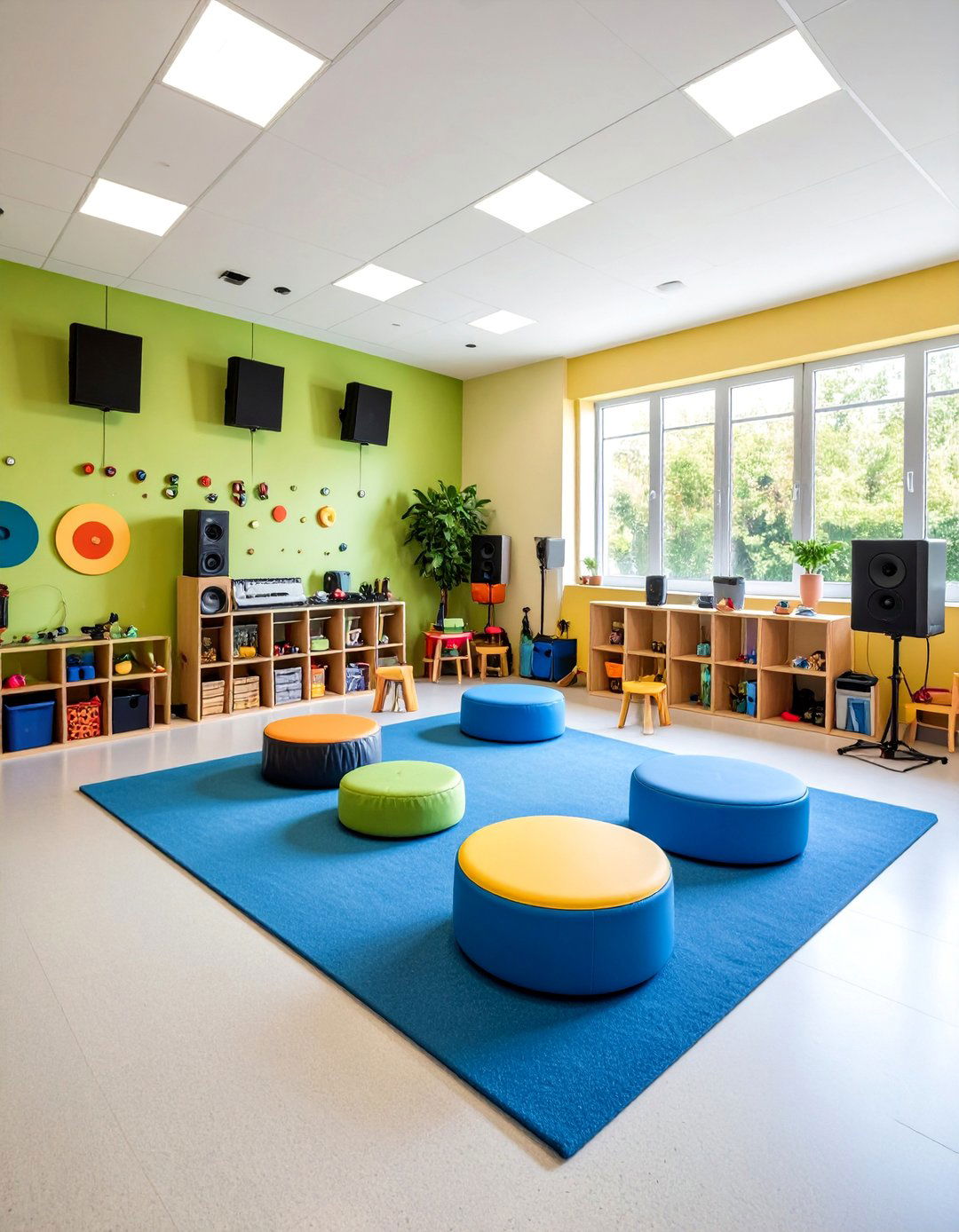
This auditory-focused sensory room creates therapeutic sound experiences through sophisticated audio equipment and interactive musical elements. Professional sound systems deliver crystal-clear nature sounds, binaural beats, or white noise for different therapeutic needs. Musical instrument stations include easy-to-play instruments like rain sticks, ocean drums, and pentatonic xylophones for creative expression. Vibrating speakers built into furniture allow users to feel music physically while noise-canceling zones provide quiet retreat areas. The room features adjustable acoustics through sound-absorbing panels and moveable acoustic barriers. Interactive music walls respond to touch with different tones and melodies while recording capabilities allow users to create and playback their compositions. Comfortable listening areas include reclined seating with built-in speakers for immersive audio experiences. Lighting synchronizes with music to create multisensory experiences. This specialized environment supports auditory processing development, emotional expression, and relaxation while providing tools for music therapy and sound-based calming strategies.
9. Minimalist Zen Sensory Room for Overstimulated Individuals
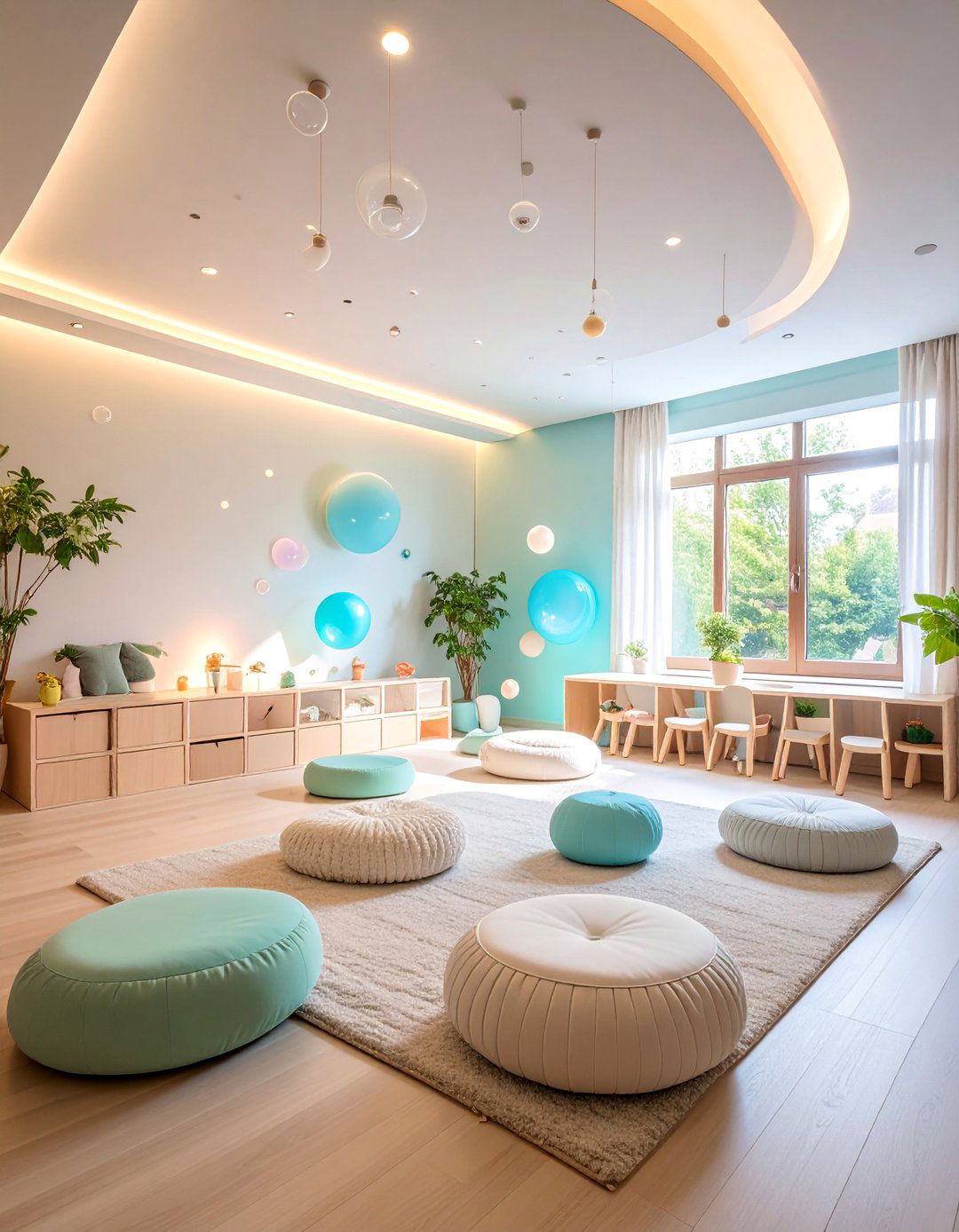
A clean, uncluttered sensory room designed specifically for individuals who become easily overwhelmed by excessive stimuli. The space features neutral colors, simple geometric shapes, and organized storage that keeps distracting items hidden. Soft, adjustable lighting allows users to control brightness levels while blackout options create complete darkness when needed. The room includes a few carefully selected sensory tools like weighted blankets, stress balls, and noise-canceling headphones stored in clean, labeled containers. Furniture consists of simple, comfortable seating without busy patterns or bright colors. A single focal point, such as a gentle bubble tube or fiber optic light, provides visual interest without overwhelming. Smooth wall surfaces offer minimal visual stimulation while textured areas provide subtle tactile input. The temperature control system maintains consistent comfort. This purposefully sparse environment offers respite from sensory overload while providing essential calming tools that support self-regulation and emotional decompression for highly sensitive individuals.
10. Multi-Generational Sensory Room for Family Use
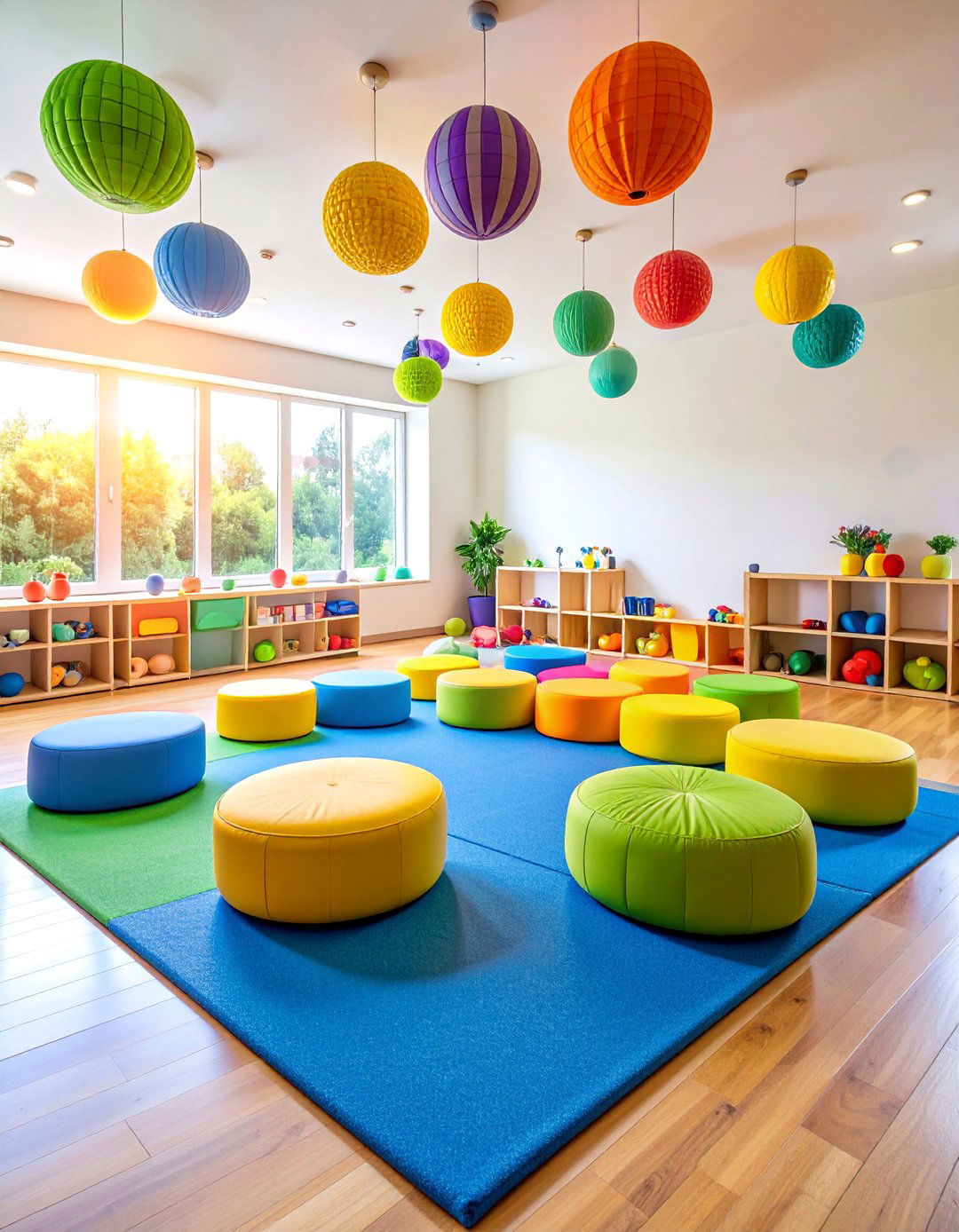
This versatile sensory room accommodates different age groups and abilities through adaptable equipment and inclusive design features. Adjustable-height equipment grows with children while adult-sized options ensure family participation. The space includes parallel activities where parents and children can engage simultaneously through side-by-side swings, weighted blankets in multiple sizes, and collaborative games. Safety features like soft flooring and rounded corners protect younger users while sophisticated lighting controls appeal to older family members. Storage systems organize equipment by age and ability level while visual supports help all users understand room expectations. The room design incorporates universal accessibility features including wheelchair access and transfer areas. Communication tools support non-verbal family members while instruction cards help caregivers facilitate activities. Comfortable seating areas allow supervision and interaction while flexible lighting accommodates different sensitivity levels. This inclusive environment strengthens family bonds while addressing diverse sensory needs across generations and developmental stages.
11. Sensory Room with Fiber Optic Wonderland
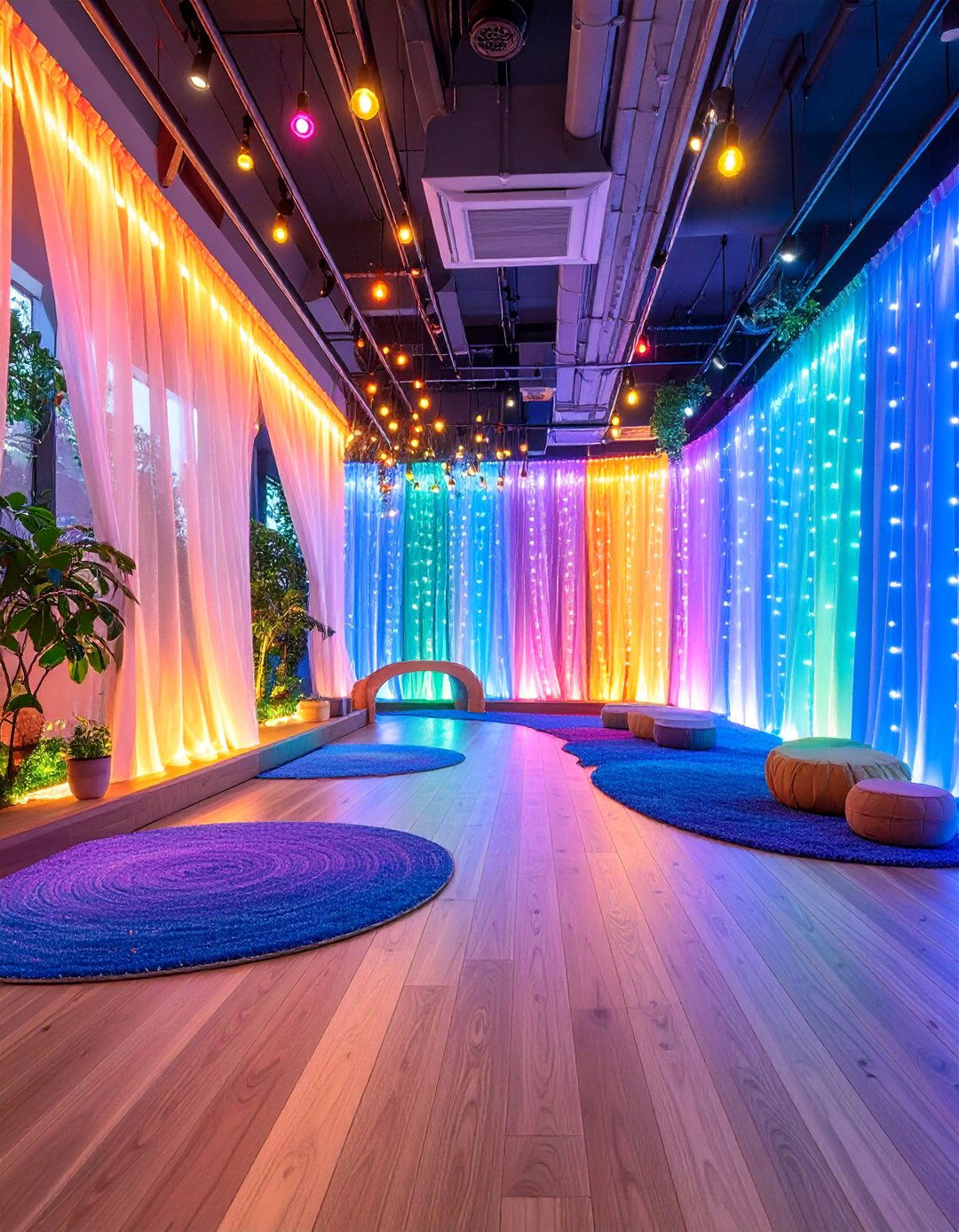
An enchanting sensory space that maximizes fiber optic technology to create a magical, tactile light experience. Fiber optic curtains cascade from ceiling to floor, creating safe-to-touch light waterfalls in changing colors. Interactive fiber optic carpets respond to pressure with illuminated patterns while wall-mounted fiber optic panels offer tactile exploration without heat or electrical danger. The centerpiece features a fiber optic infinity tunnel that creates depth perception challenges and visual fascination. Comfortable floor seating with built-in fiber optic strands provides close interaction with the lighting elements. Color-changing controls allow users to customize their environment while preset programs offer themed experiences like underwater scenes or space adventures. The room includes mirrors to amplify the fiber optic effects and create an immersive light environment. Soft background music complements the visual experience while aromatherapy enhances relaxation. This specialized lighting design promotes visual tracking, tactile exploration, and emotional regulation through safe, interactive light technology.
12. Sensory Room with Ball Pit Therapy Zone
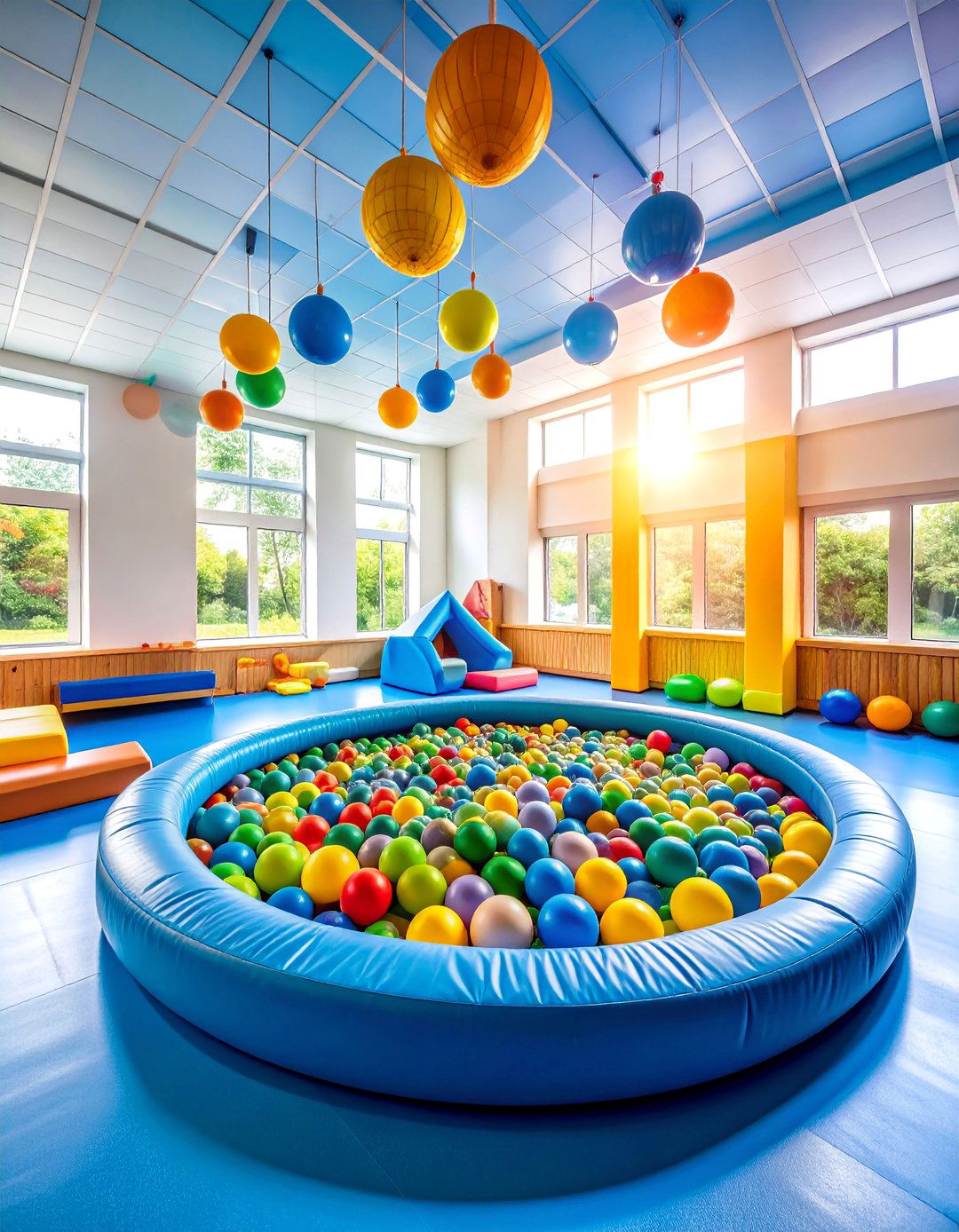
A dynamic sensory room centered around therapeutic ball pit experiences that provide proprioceptive input and playful engagement. The main ball pit features thousands of colorful plastic balls in a safe, padded enclosure with various entry and exit points. Different ball textures including smooth, bumpy, and weighted options create diverse tactile experiences. The surrounding area includes ball-launching activities, sorting games, and ball-rolling tracks for cause-and-effect learning. Safety features include soft landing areas, proper supervision zones, and easily cleanable materials. The room incorporates overhead suspension points for adding therapy swings above the ball pit area. Storage systems keep balls organized and allow for easy cleaning and maintenance. Interactive wall panels near the ball pit provide additional sensory input while visual supports explain safe play rules. Comfortable seating for caregivers ensures proper supervision while allowing observation of therapeutic benefits. This engaging environment promotes motor planning, sensory integration, and joyful physical activity while providing deep pressure input through ball immersion.
13. Therapeutic Swing Sensory Room with Suspended Equipment
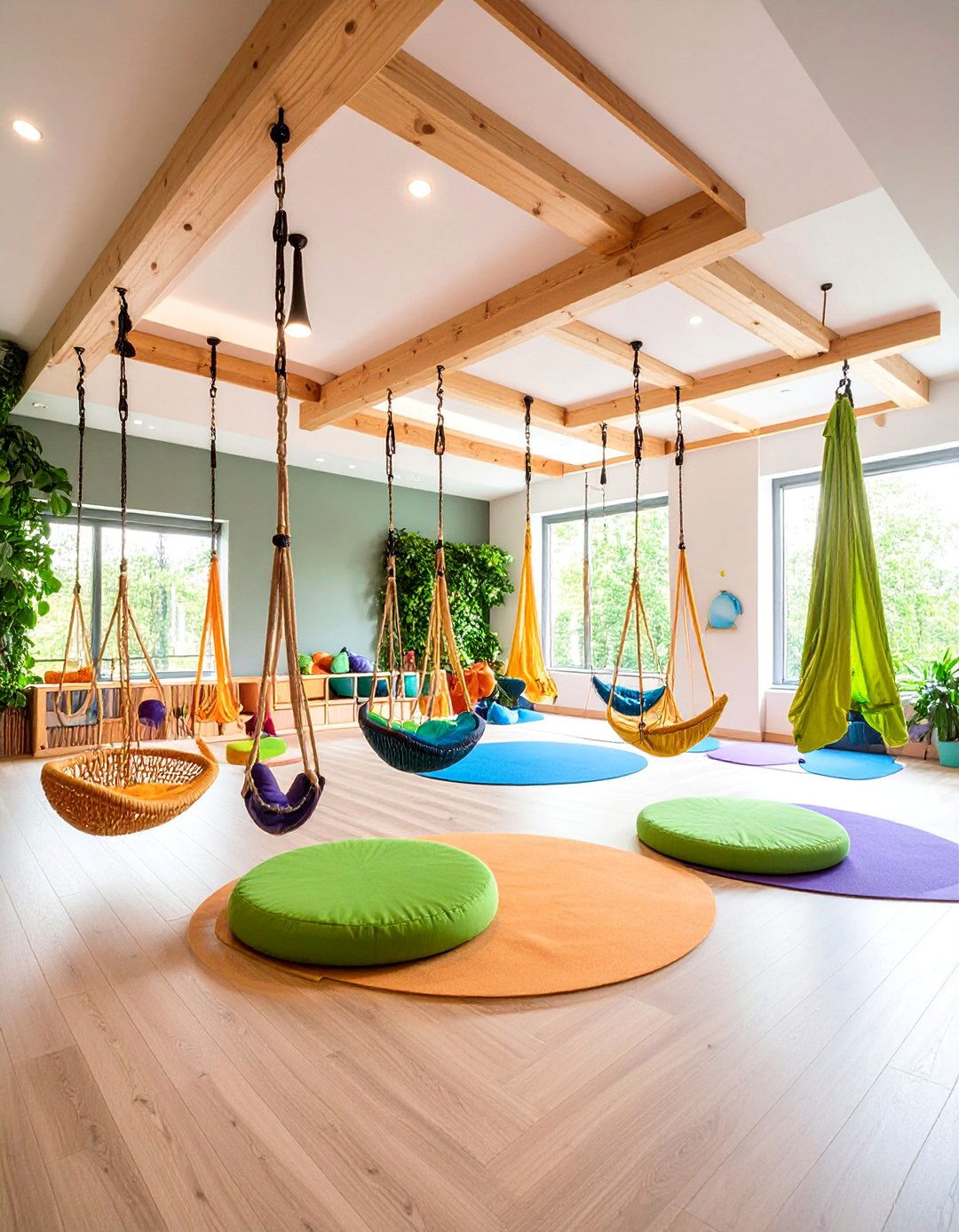
A comprehensive swing-focused sensory room that utilizes various suspended equipment for vestibular and proprioceptive therapy. The space features multiple swing types including platform swings for core strengthening, lycra swings for compression, and bolster swings for balance challenges. Professional-grade suspension systems ensure safety while allowing therapists to quickly change equipment configurations. The room includes crash mats positioned strategically around swing areas to ensure safe landings during transfers. Climbing elements suspended from the ceiling provide additional movement opportunities while maintaining safety standards. The flooring combines cushioned areas with textured surfaces to support different therapeutic activities. Adjustable lighting accommodates various activity levels while storage systems keep equipment organized and accessible. Visual supports help users understand proper swing usage and safety procedures. Temperature control maintains comfort during physical activities while ventilation ensures air circulation. This specialized movement environment supports sensory integration therapy, motor planning development, and vestibular processing while providing certified equipment that meets therapeutic standards.
14. Space Theme Sensory Room with Galaxy Projections
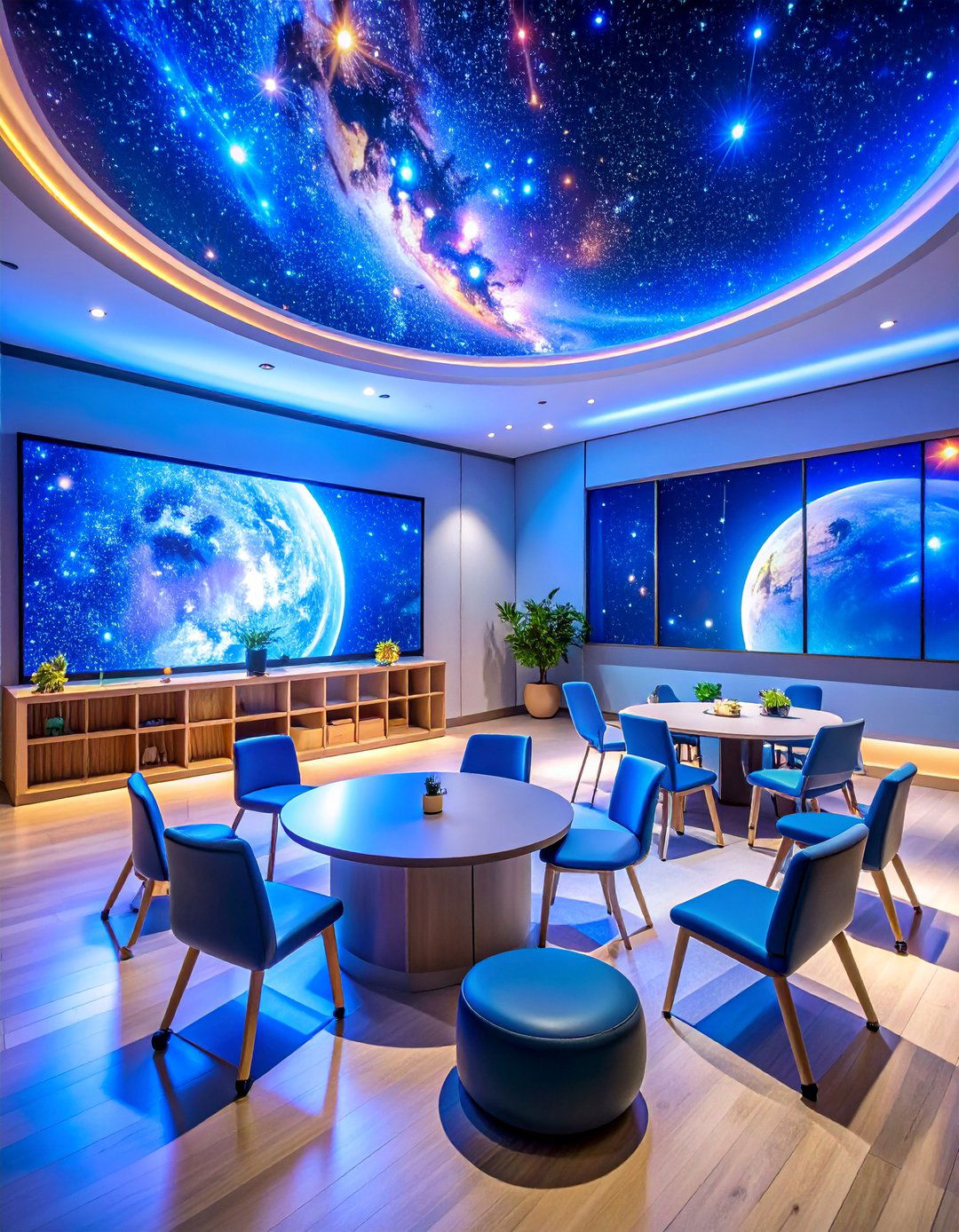
An otherworldly sensory room that transports users to outer space through immersive astronomical experiences. Galaxy projectors cast moving stars, planets, and nebulae across walls and ceiling while fiber optic installations create twinkling constellations. The room features a dark color scheme with metallic accents and glow-in-the-dark elements that activate when lights dim. Interactive space-themed activities include moon rock sensory bins, astronaut training obstacles, and planet-learning stations. Comfortable zero-gravity positioning with body-conforming furniture simulates weightless experiences. Sound systems play space ambiance including cosmic frequencies and astronaut communications. The room includes educational elements like solar system models and space fact displays that engage learning while providing sensory input. Lighting controls simulate day-night cycles and can create aurora effects across surfaces. Temperature regulation mimics space station environments while maintaining user comfort. This imaginative design promotes wonder and exploration while supporting visual tracking, cause-and-effect learning, and emotional regulation through captivating space-themed sensory experiences.
15. Sensory Room with Interactive Technology Integration

A modern sensory room that incorporates cutting-edge interactive technology to create responsive, personalized sensory experiences. Touch-sensitive wall panels respond to user interaction with light, sound, and vibration feedback while motion sensors trigger environmental changes based on movement patterns. Tablet-controlled systems allow users to customize lighting, sound, and equipment settings according to personal preferences and therapeutic goals. Virtual reality stations provide controlled sensory experiences for users ready for advanced technology interaction. Interactive floor systems project games and activities that respond to footsteps and body movement. Smart storage systems track equipment usage and suggest activities based on user history and preferences. The room includes traditional sensory equipment enhanced with technology like app-controlled bubble tubes and programmable fiber optics. Data collection capabilities help therapists track progress and adjust interventions. This technology-enhanced environment promotes digital literacy while maintaining therapeutic benefits through adaptive, responsive sensory experiences that evolve with user needs.
16. Sensory Room for Crisis De-escalation and Emotional Regulation
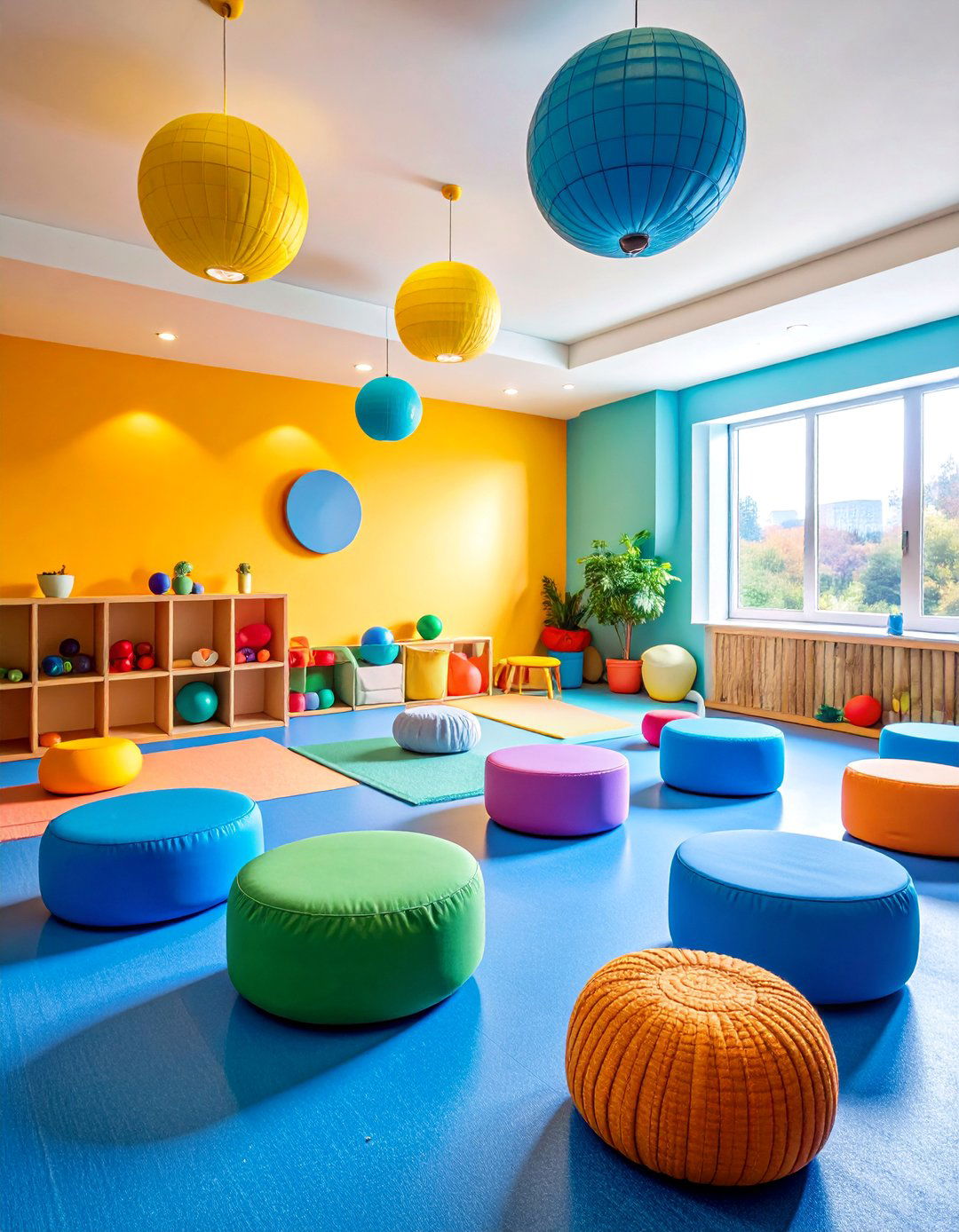
A specialized sensory room designed specifically for managing emotional crises and supporting self-regulation during overwhelming moments. The space features immediate access to calming tools including weighted blankets, stress balls, and noise-canceling headphones strategically placed for quick retrieval. Soft, adjustable lighting can instantly shift to soothing blue tones while blackout capabilities provide complete sensory reduction when needed. The room includes a safe quiet corner with thick padding and comfort items where individuals can retreat during meltdowns. Visual supports provide step-by-step emotional regulation strategies while communication tools help non-verbal individuals express their needs. The design eliminates potential safety hazards while maintaining therapeutic effectiveness through crash-proof furniture and rounded edges. Emergency communication systems connect to support staff while maintaining privacy and dignity. Temperature controls ensure optimal comfort during crisis situations. Storage areas keep personal comfort items and preferred sensory tools easily accessible. This therapeutic environment provides immediate support during emotional dysregulation while teaching long-term coping strategies.
17. Sensory Room with Texture Exploration Wall
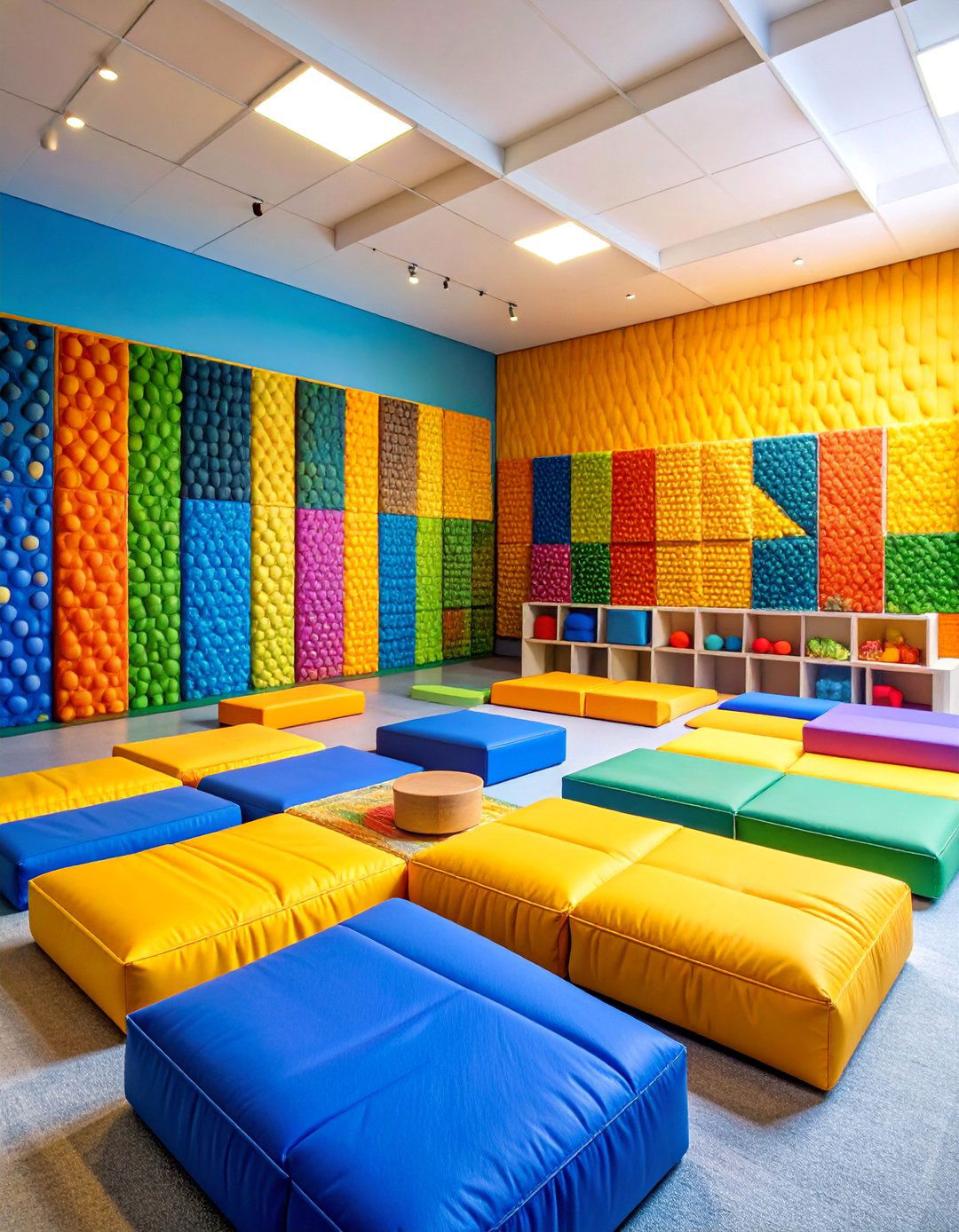
A tactile-focused sensory room featuring an extensive texture exploration wall that engages touch sensation through diverse materials and surfaces. The wall incorporates dozens of different textures including smooth silk, rough sandpaper, soft fur, bumpy bubble wrap, and cool metal surfaces arranged at various heights for accessibility. Interactive texture panels allow users to explore contrasts like hot-cold sensations and hard-soft comparisons through safe, therapeutic materials. The room includes texture matching games, tactile discovery boxes, and hands-on exploration stations that promote sensory discrimination skills. Comfortable seating positioned at optimal distances allows extended exploration while maintaining postural support. The lighting design illuminates texture details without creating glare or shadows that might interfere with tactile exploration. Safety features ensure all materials are washable, non-toxic, and appropriate for oral exploration when necessary. Storage systems organize additional texture tools and materials while allowing easy rotation to maintain novelty. This specialized environment supports tactile processing development, sensory integration, and emotional regulation through purposeful touch experiences.
18. Sensory Room with Mirror Therapy and Reflection Spaces
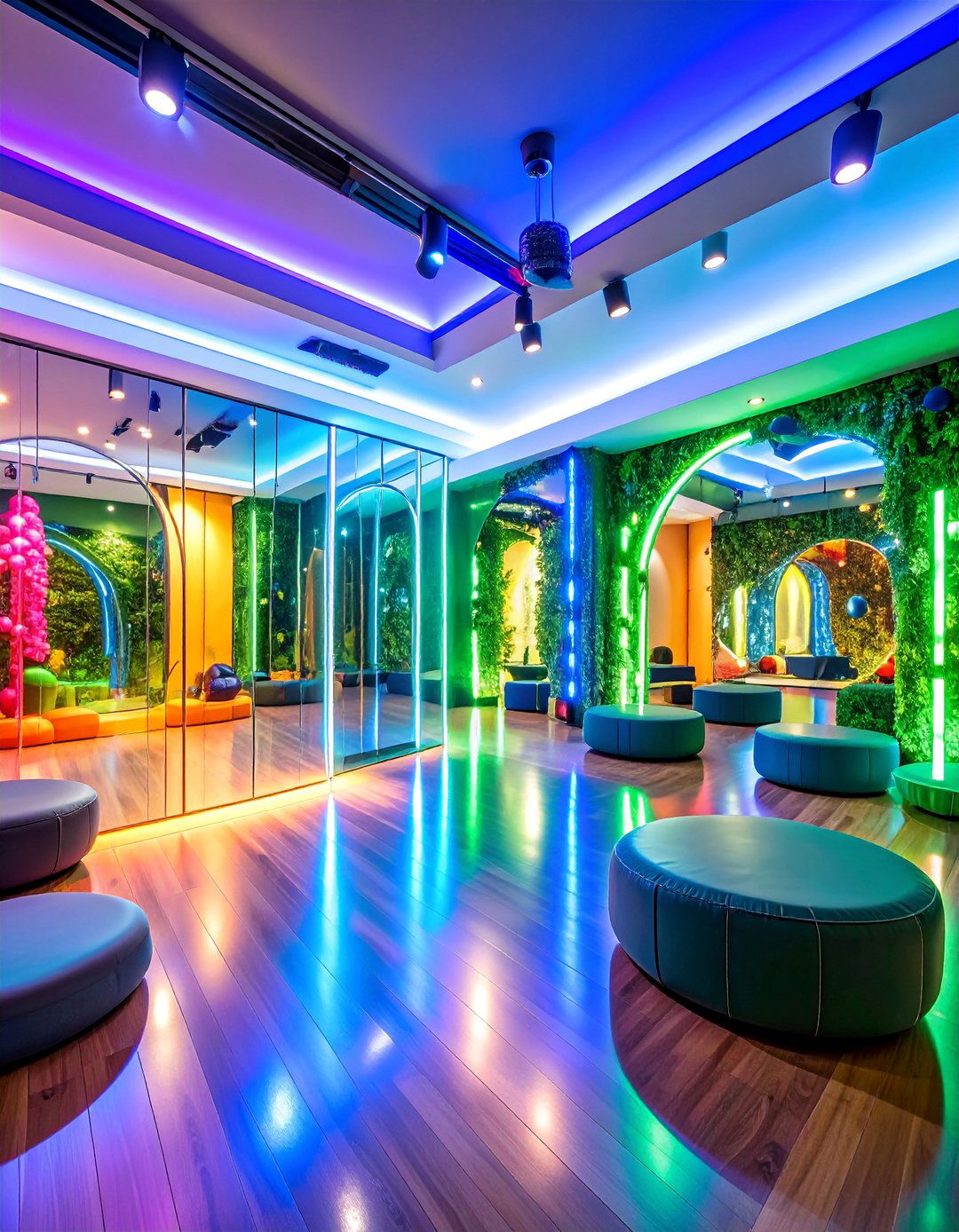
A visually engaging sensory room that utilizes mirrors strategically to enhance spatial awareness, body image development, and visual processing skills. Safety mirrors in various sizes create interesting visual effects while remaining shatter-proof for user protection. The room includes interactive mirror activities like dance movement, facial expression practice, and body part identification games. Bubble tubes and fiber optic lights positioned near mirrors create amplified visual effects that fascinate users while promoting visual tracking skills. The space features adjustable lighting that works optimally with mirror surfaces to create desired therapeutic effects without overwhelming glare. Mirror panels can be covered when not in use to accommodate individuals who find reflections overstimulating. The room incorporates traditional sensory equipment enhanced by mirror placement to create new visual perspectives. Comfortable seating areas positioned for optimal mirror viewing support extended activities. Therapeutic goals include improving self-awareness, spatial orientation, and visual motor skills through purposeful mirror interaction. This reflective environment promotes positive self-image while supporting visual processing development and emotional growth.
19. Sensory Room with Temperature Regulation Zones

A therapeutic sensory room that incorporates various temperature experiences to support sensory processing and thermoregulation skills. The space features designated hot and cold zones with safe temperature-controlled surfaces, heated massage pads, and cooling gel mats. Thermal regulation activities include temperature discrimination games using warm and cool objects in controlled sensory bins. The room includes heated seating areas for individuals who seek warmth for calming while air-conditioned spaces provide relief for those who overheat easily. Hot and cold compress stations offer therapeutic temperature applications for joint compression and muscle relaxation. Safety features ensure all temperature elements remain within therapeutic ranges while preventing burns or excessive cooling. The room incorporates visual indicators that help users understand temperature changes and make appropriate clothing adjustments. Comfortable transitional areas allow gradual adaptation between temperature zones. This specialized environment supports sensory integration development while teaching body awareness and temperature regulation skills that promote overall sensory processing abilities and emotional self-regulation.
20. Sensory Room with Communication and Social Skills Development
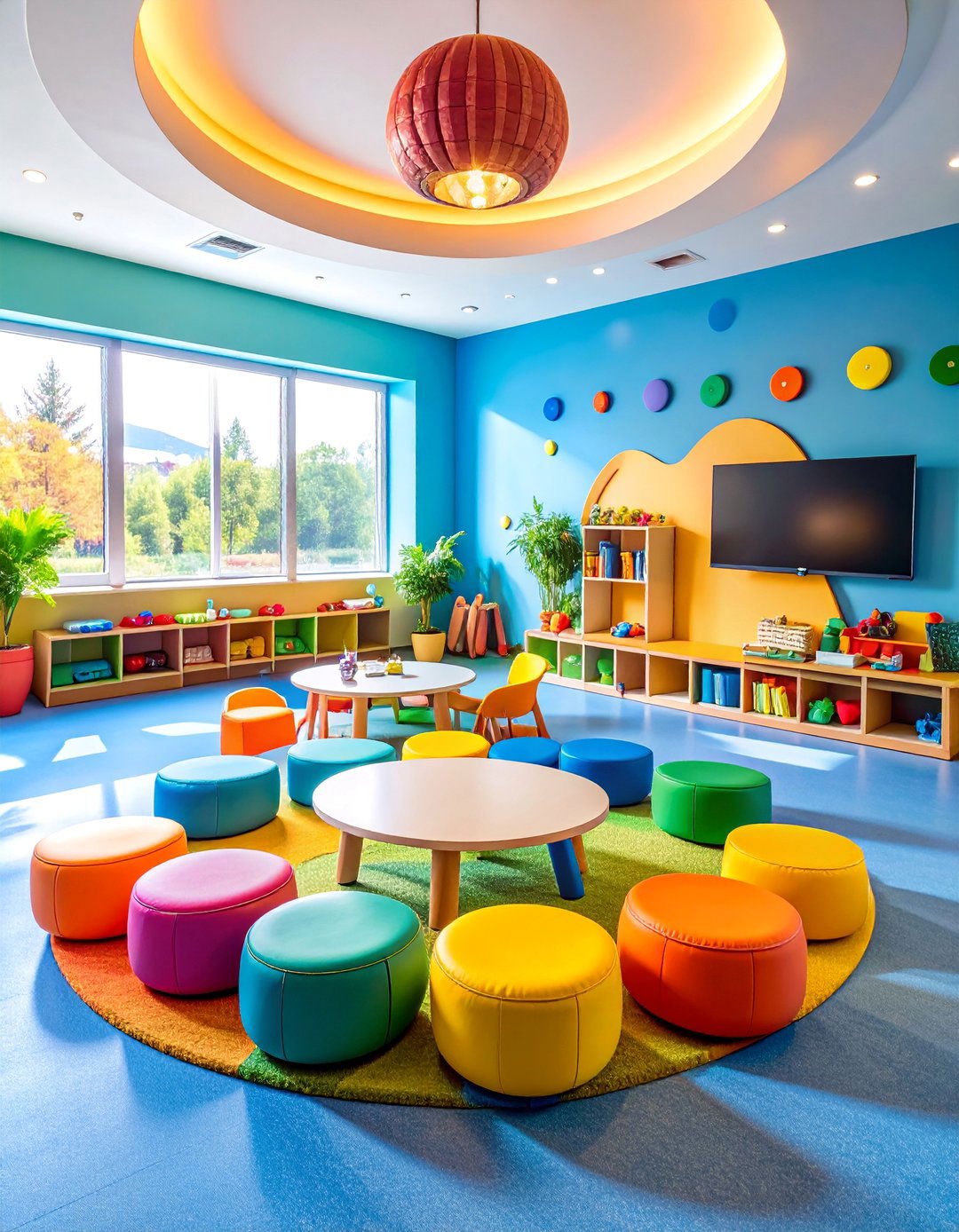
A comprehensive sensory room designed to support communication development and social interaction through structured sensory experiences. The space includes communication boards, picture exchange systems, and assistive technology devices positioned throughout sensory stations. Social interaction zones feature parallel equipment like side-by-side swings that encourage peer interaction while providing sensory input. The room incorporates turn-taking activities, cooperative games, and group sensory experiences that promote social skill development. Visual supports provide clear expectations for social behavior and communication attempts during sensory activities. The design includes quiet individual spaces and group activity areas to accommodate different social comfort levels. Communication tools range from simple picture cards to sophisticated voice-generating devices that support various communication abilities. Sensory activities specifically chosen to promote interaction include collaborative art projects, group music making, and partner obstacle courses. Professional supervision areas allow therapists and educators to facilitate social learning while users engage in preferred sensory activities. This integrated environment combines therapeutic sensory input with essential communication and social skill development opportunities.
21. Portable and Mobile Sensory Room Setup
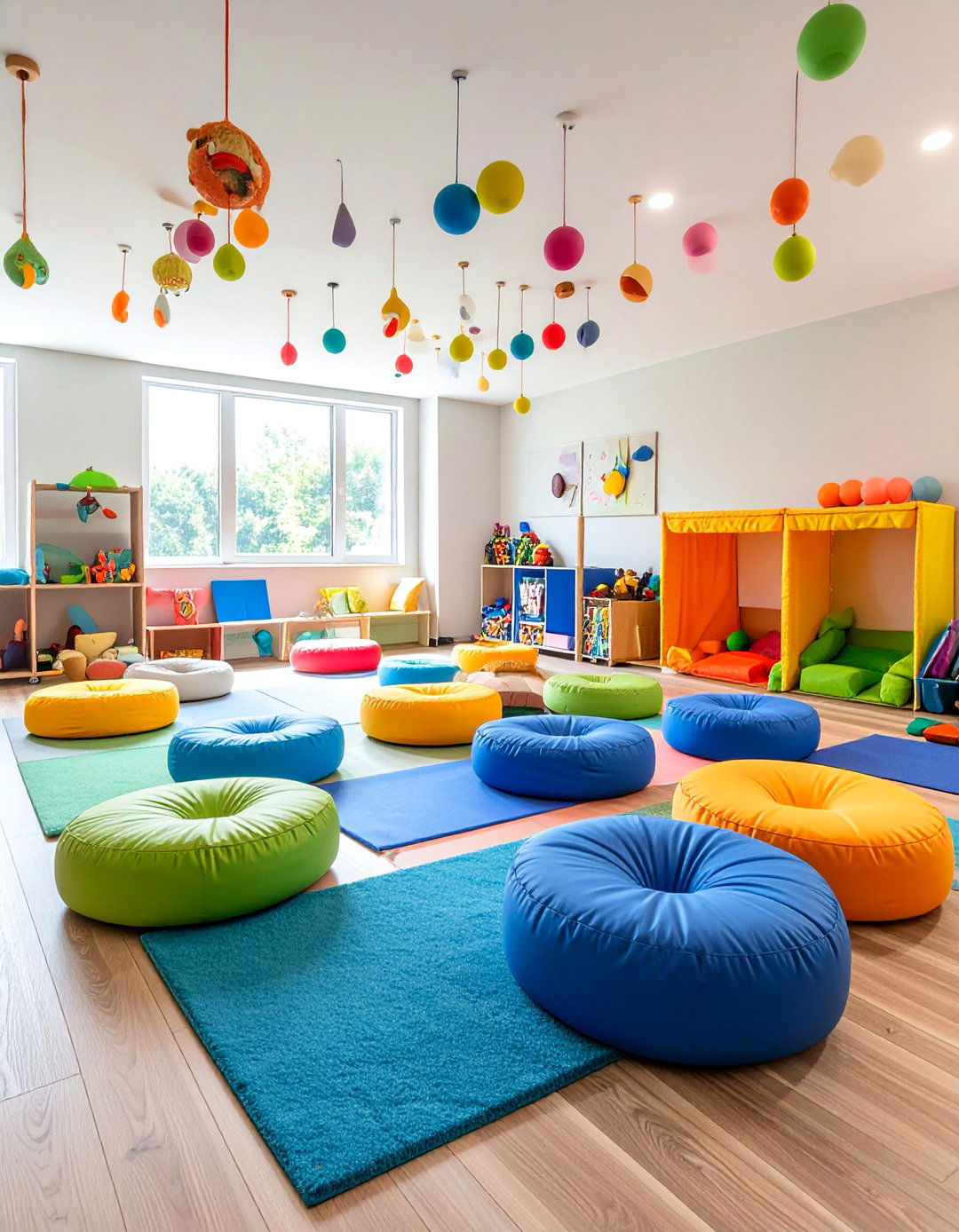
A flexible sensory room solution that utilizes portable equipment and modular design elements to create therapeutic environments in various locations. The setup includes wheeled sensory carts containing essential equipment like portable bubble tubes, battery-operated fiber optics, and collapsible weighted items. Modular furniture pieces can be quickly arranged and rearranged to suit different spaces and user needs while maintaining therapeutic effectiveness. The room features easy-setup projection systems that transform any space into a sensory environment within minutes. Storage solutions include labeled containers and hanging organizers that facilitate quick deployment and cleanup. The design accommodates various room sizes and shapes while maintaining safety standards through portable safety equipment and adaptable layouts. Technology elements include tablet-controlled systems that don't require permanent installation while still providing interactive experiences. Professional-grade equipment in portable formats ensures therapeutic quality regardless of location. This versatile approach brings sensory therapy to users who cannot access permanent sensory rooms while maintaining high therapeutic standards through carefully selected portable equipment.
22. Sensory Room with Oral Motor and Feeding Therapy Focus
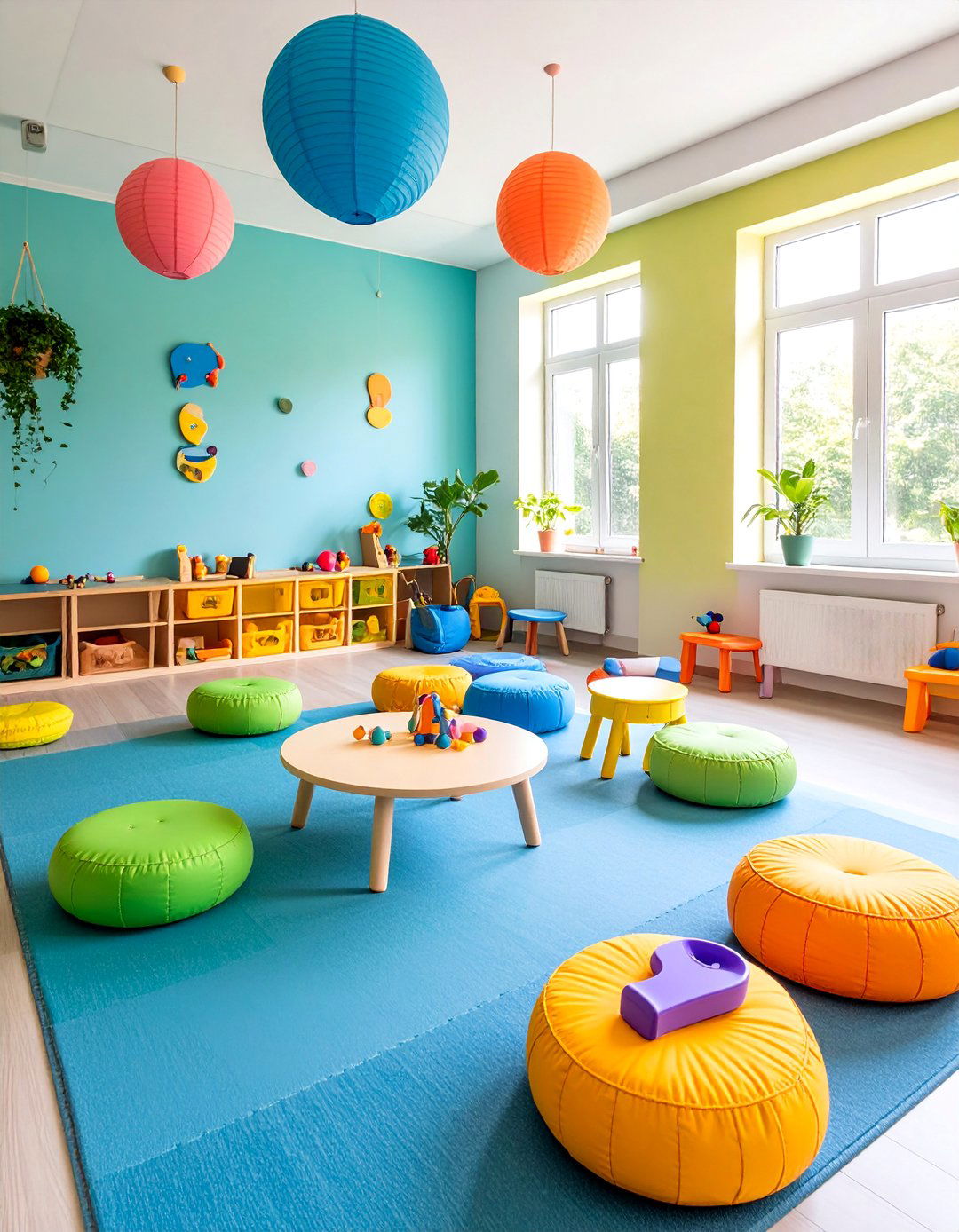
A specialized sensory room that addresses oral motor development and feeding therapy through comprehensive sensory integration approaches. The space features oral sensory stations with appropriate chew toys, vibrating tools, and texture exploration materials designed for mouth safety. Feeding therapy areas include various textured foods for exploration, appropriate utensils, and comfortable positioning equipment that supports optimal eating postures. The room incorporates oral motor exercises through blow toys, bubble activities, and resistance straws that strengthen muscles needed for speech and eating. Visual supports demonstrate proper oral motor techniques while making activities enjoyable and engaging. The design includes easy-to-clean surfaces and materials that meet health department standards for food-related therapy activities. Sensory preparation activities help individuals become ready for feeding sessions through calming input like weighted lap pads and compression activities. Storage systems organize oral motor tools by texture and intensity while maintaining sanitary conditions. This therapeutic environment supports feeding development while addressing underlying sensory processing issues that often impact eating and oral motor skills.
23. Sensory Room for Elderly and Dementia Care
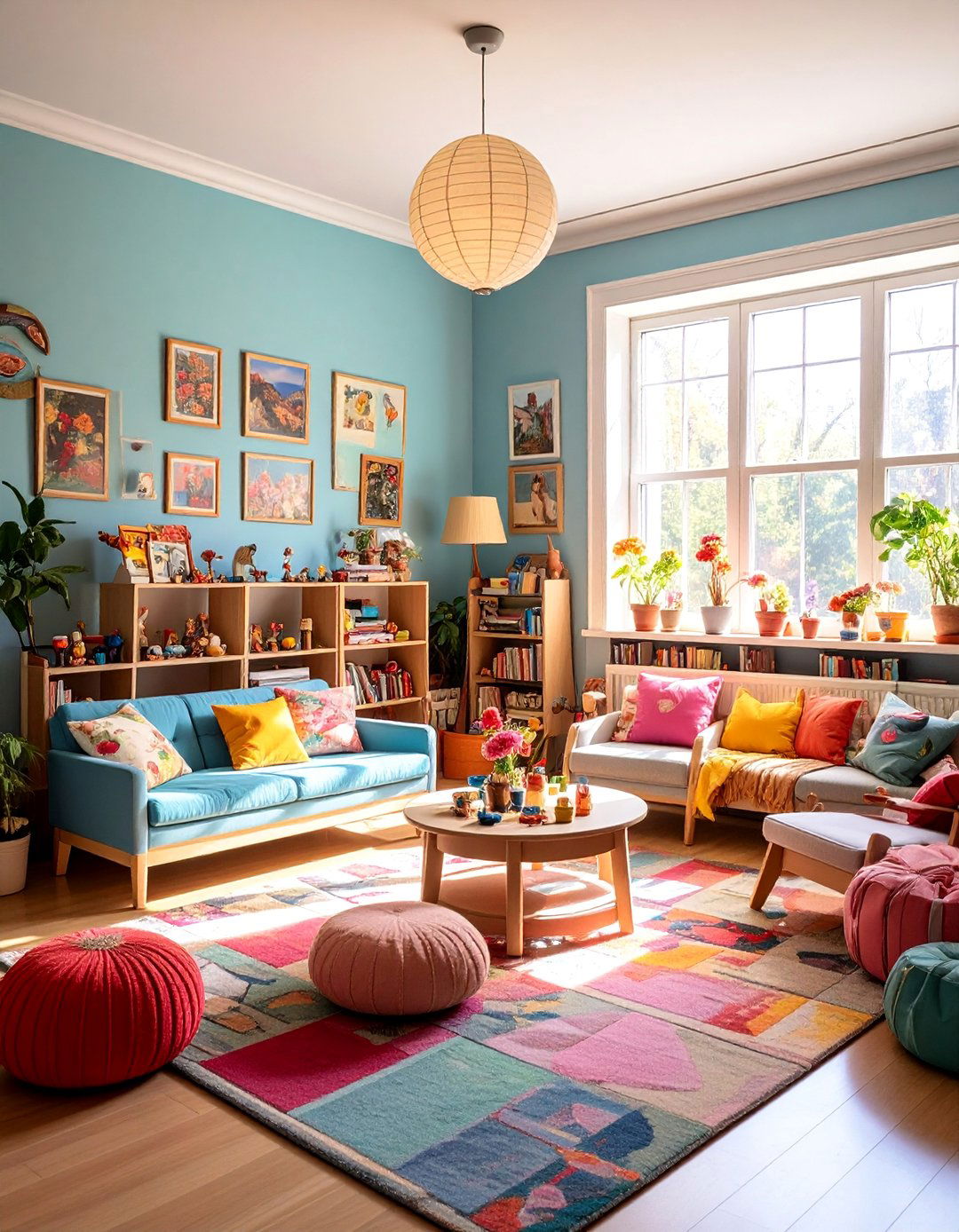
A thoughtfully designed sensory room that addresses the unique needs of elderly individuals and those with dementia through familiar, comforting sensory experiences. The space features memory-stimulating elements like familiar music from different eras, vintage photographs, and textured objects that evoke positive memories. Lighting design avoids confusion-causing shadows while providing adequate illumination for safe movement and visual processing. The room includes gentle sensory stimulation through soft textures, pleasant aromatherapy scents, and calming visual elements that don't overwhelm aging sensory systems. Safety features accommodate mobility challenges through accessible seating, clear pathways, and fall-prevention measures while maintaining therapeutic benefits. Activities focus on maintaining cognitive function through gentle sensory engagement rather than learning new skills. The design incorporates familiar objects and environments that provide comfort and reduce anxiety associated with memory loss. Professional supervision areas allow caregivers to provide support while encouraging independence during sensory exploration. This specialized environment promotes quality of life while supporting remaining abilities through appropriate sensory stimulation.
24. Sensory Room with Fine Motor Skill Development Focus
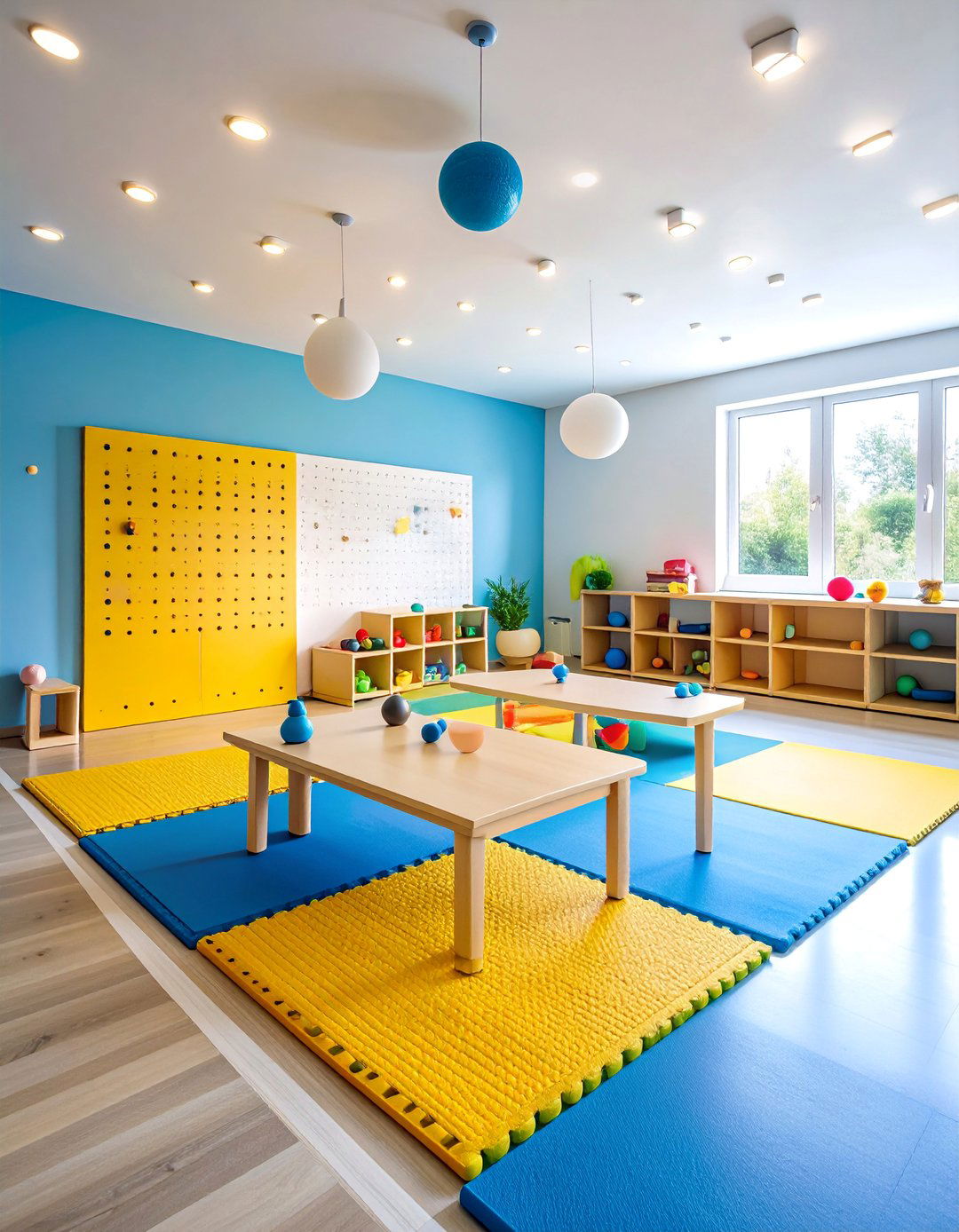
A comprehensive sensory room that specifically targets fine motor skill development through engaging, therapeutic activities combined with sensory support. The space features numerous fine motor stations including pegboards, lacing activities, and manipulative toys that strengthen hand muscles while providing sensory feedback. Sensory preparation activities like hand massage with textured materials and finger exercises ready users for fine motor challenges. The room incorporates various writing surfaces including sand trays, gel boards, and textured paper that make handwriting practice more engaging. Tools range from adaptive equipment for users with challenges to advanced activities for skill building. The design includes optimal lighting that reduces visual strain during detailed work while comfortable seating supports proper positioning for fine motor activities. Sensory breaks areas allow users to reset when fine motor work becomes overwhelming while maintaining engagement in therapeutic goals. Storage systems organize materials by difficulty level and therapeutic objectives while keeping supplies easily accessible. This specialized environment combines occupational therapy techniques with sensory support to promote hand strength, coordination, and functional fine motor skills.
25. Sensory Room with Gross Motor and Physical Therapy Integration
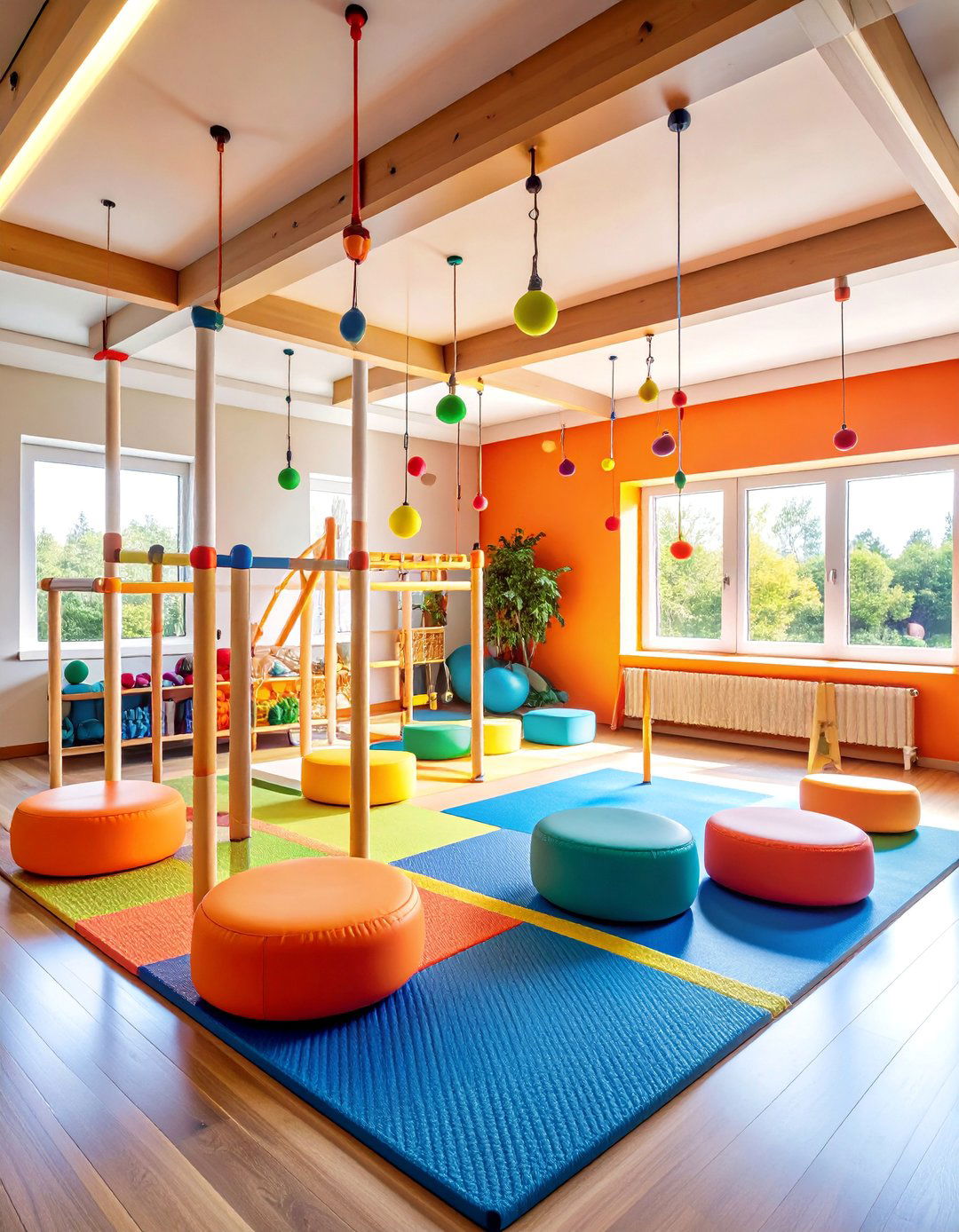
A dynamic sensory room that combines gross motor development with sensory integration through movement-based therapeutic activities. The space features obstacle courses that change regularly to challenge different motor skills while providing varied sensory input through climbing, crawling, and balancing activities. Professional therapy equipment includes parallel bars, walking aids, and strength-building tools integrated with sensory elements like textured surfaces and weighted components. The room incorporates movement preparation activities through proprioceptive input that readies muscles for physical challenges while building body awareness. Balance activities utilize various unstable surfaces combined with visual and vestibular challenges to improve coordination and stability. The design accommodates wheelchairs and mobility devices while providing transfer areas for users with varying physical abilities. Safety features include protective padding, proper flooring, and emergency equipment while maintaining an engaging, therapeutic environment. Progress tracking systems help therapists monitor improvement while sensory elements keep activities motivating and enjoyable. This integrated approach supports physical development while addressing underlying sensory processing needs that often impact motor performance and coordination.
Conclusion:
These 25 sensory room ideas demonstrate the versatility and therapeutic potential of well-designed sensory environments. From calming underwater themes to active movement spaces, each concept addresses specific needs while promoting emotional regulation, sensory processing, and skill development. Whether creating a simple home sensory corner or a comprehensive therapy center, these ideas provide frameworks for designing spaces that truly support individual growth. The key lies in understanding user needs, selecting appropriate equipment, and creating environments that balance stimulation with comfort. Successful sensory rooms evolve with their users, offering endless possibilities for therapeutic engagement and personal development.


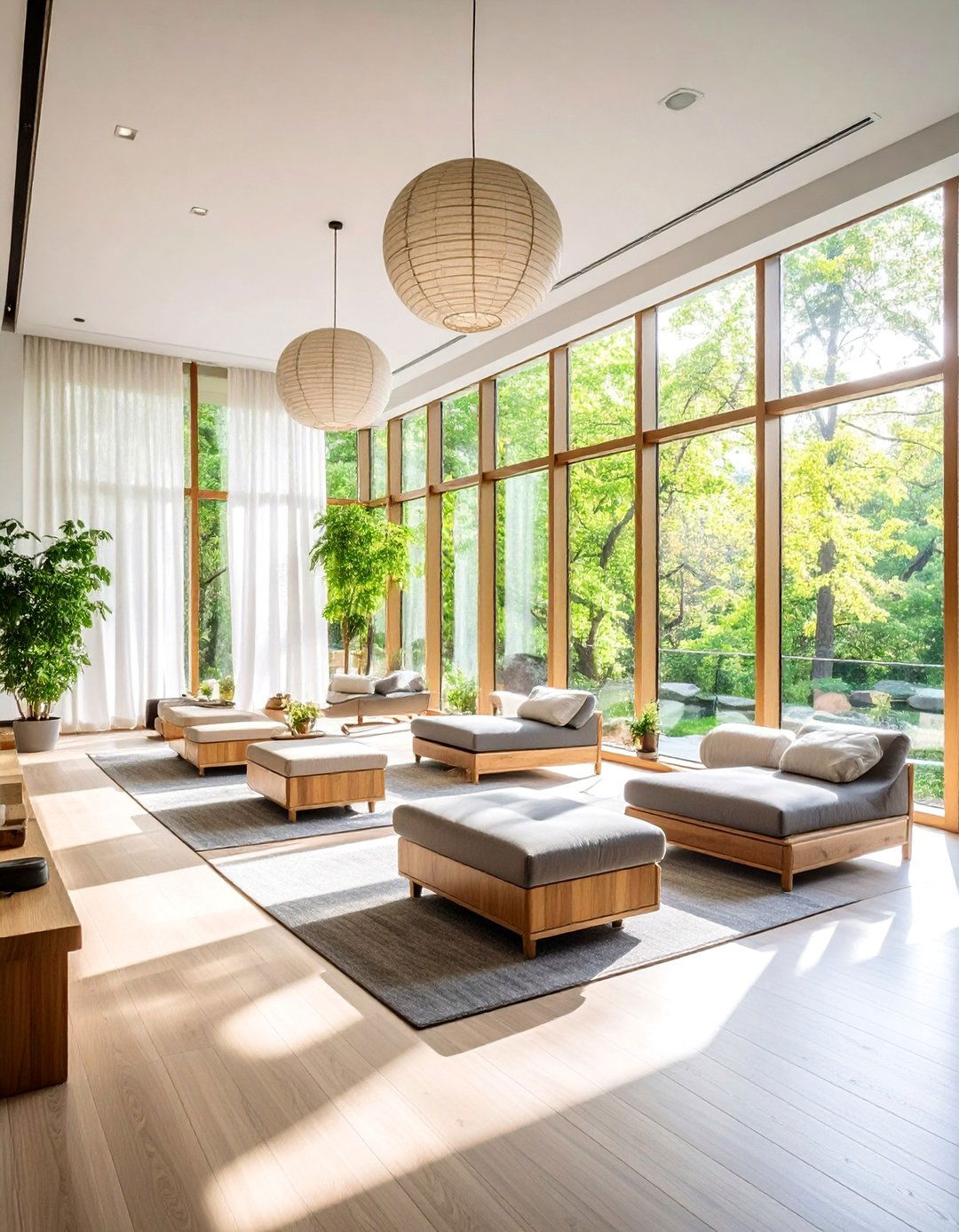
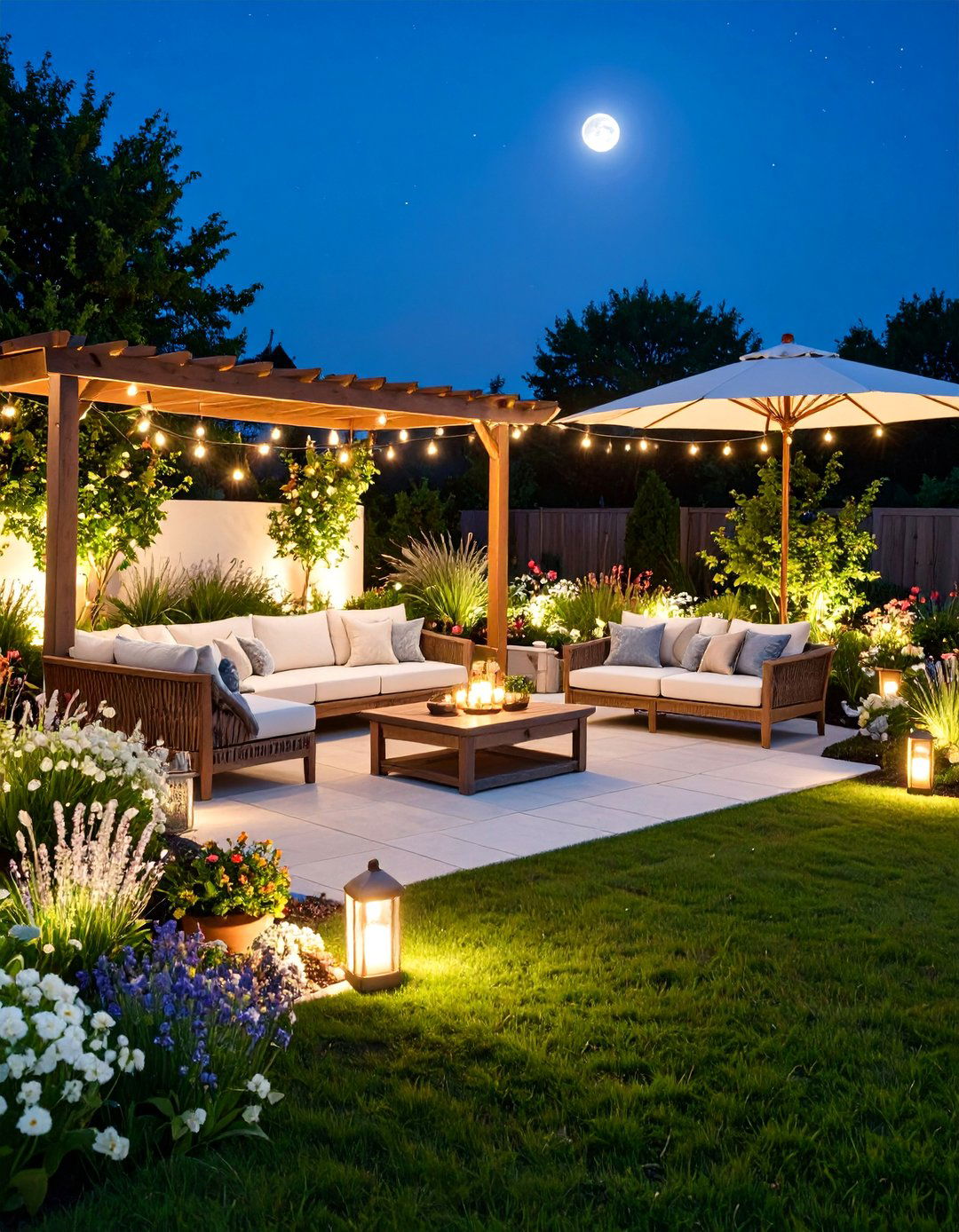
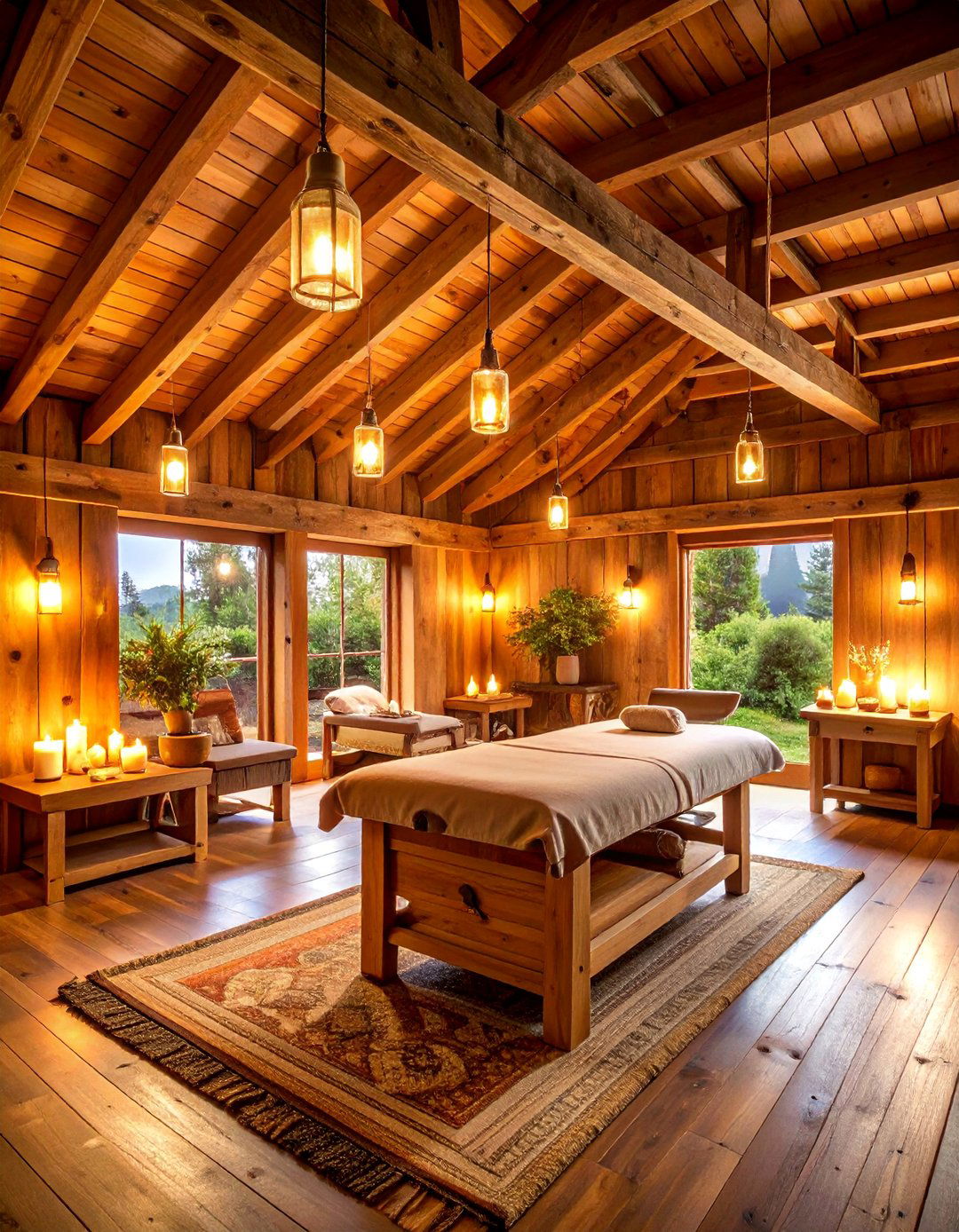
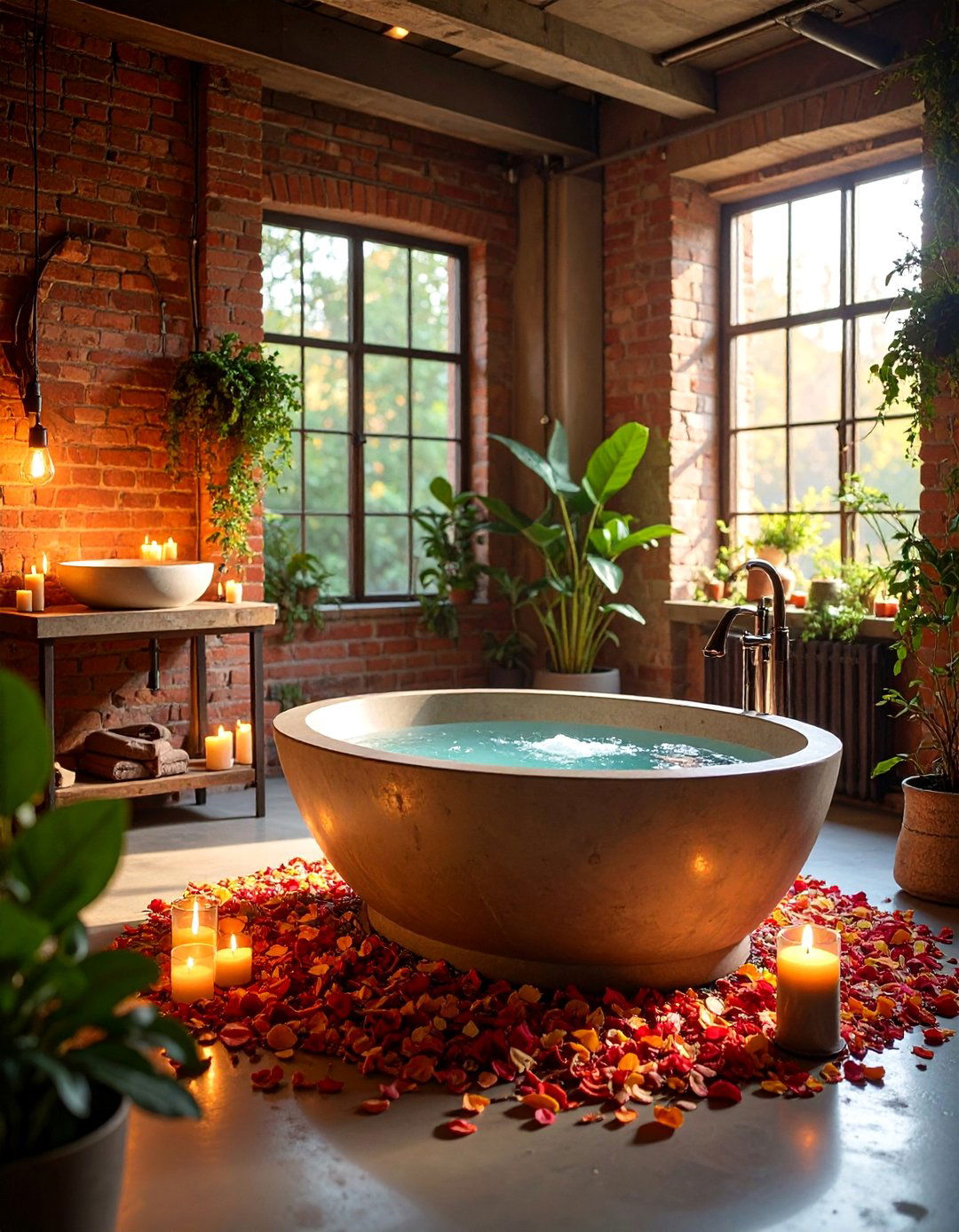
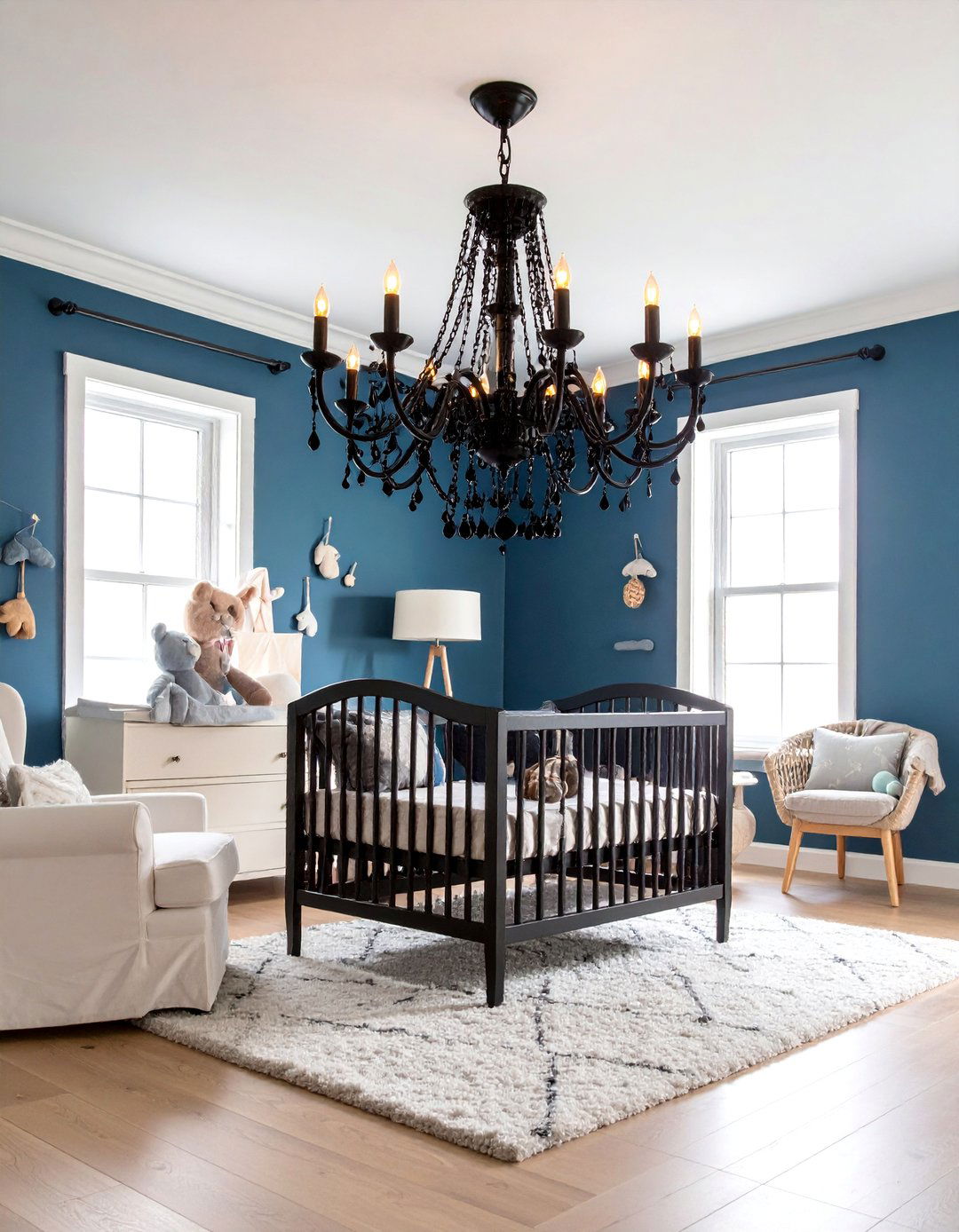
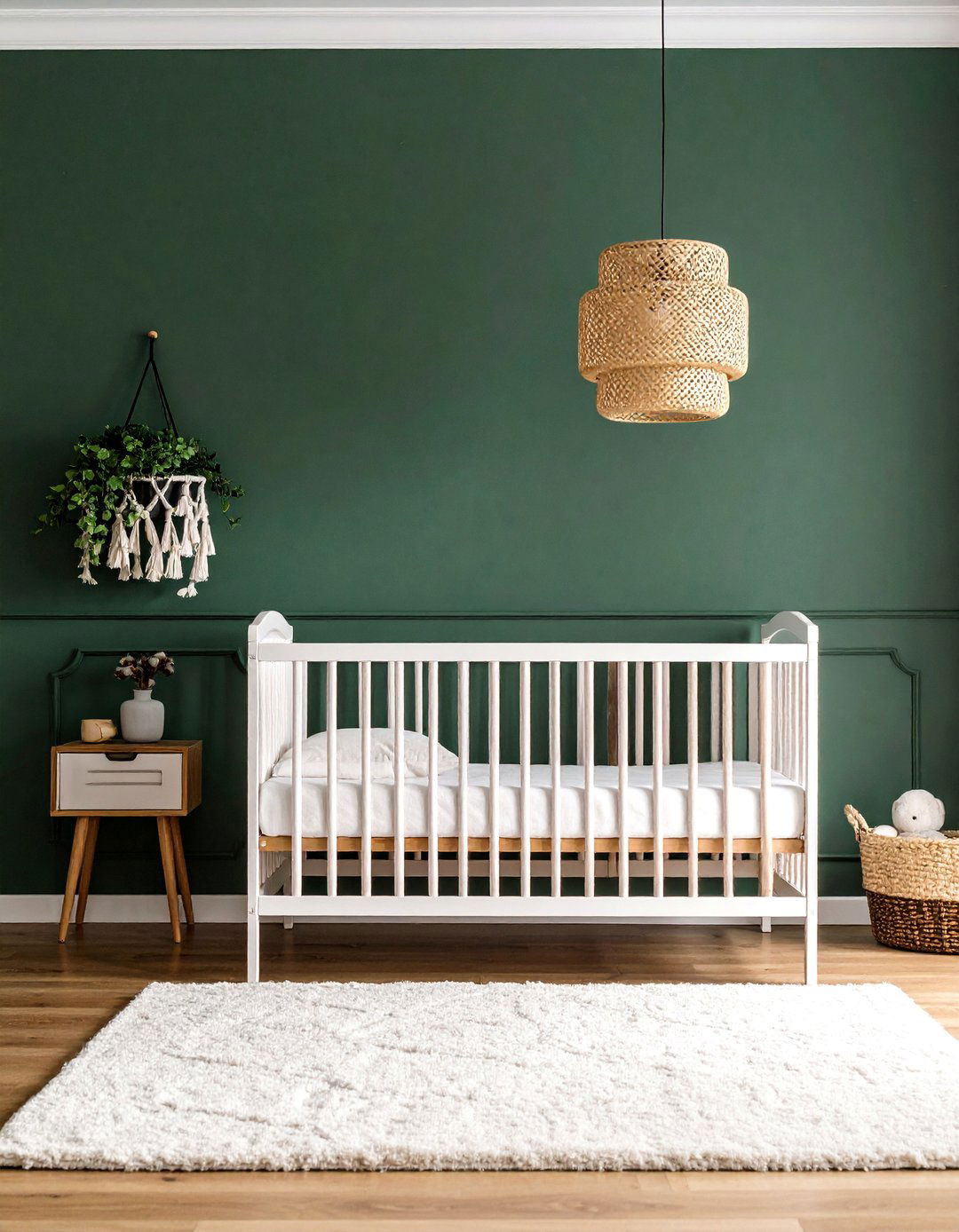

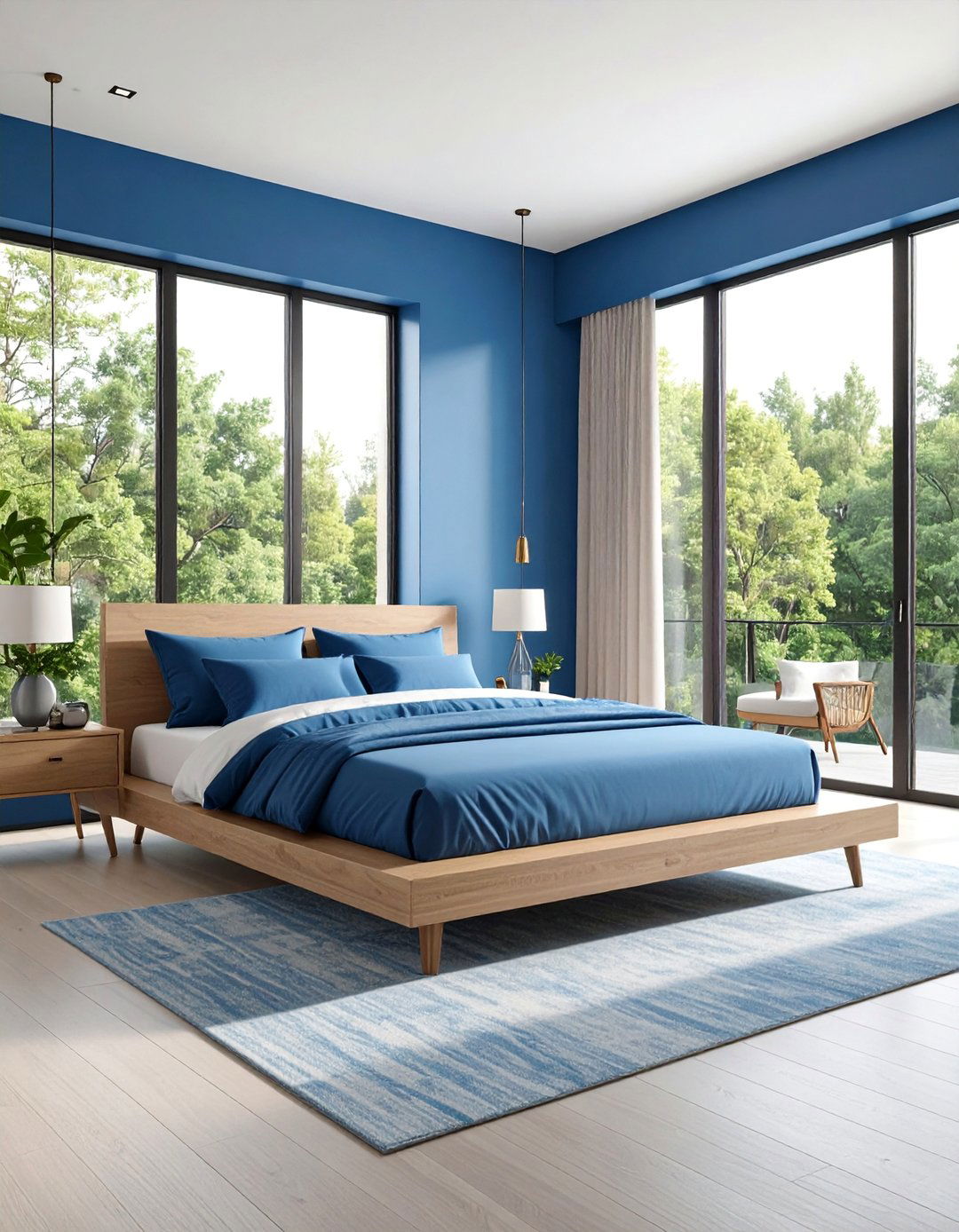
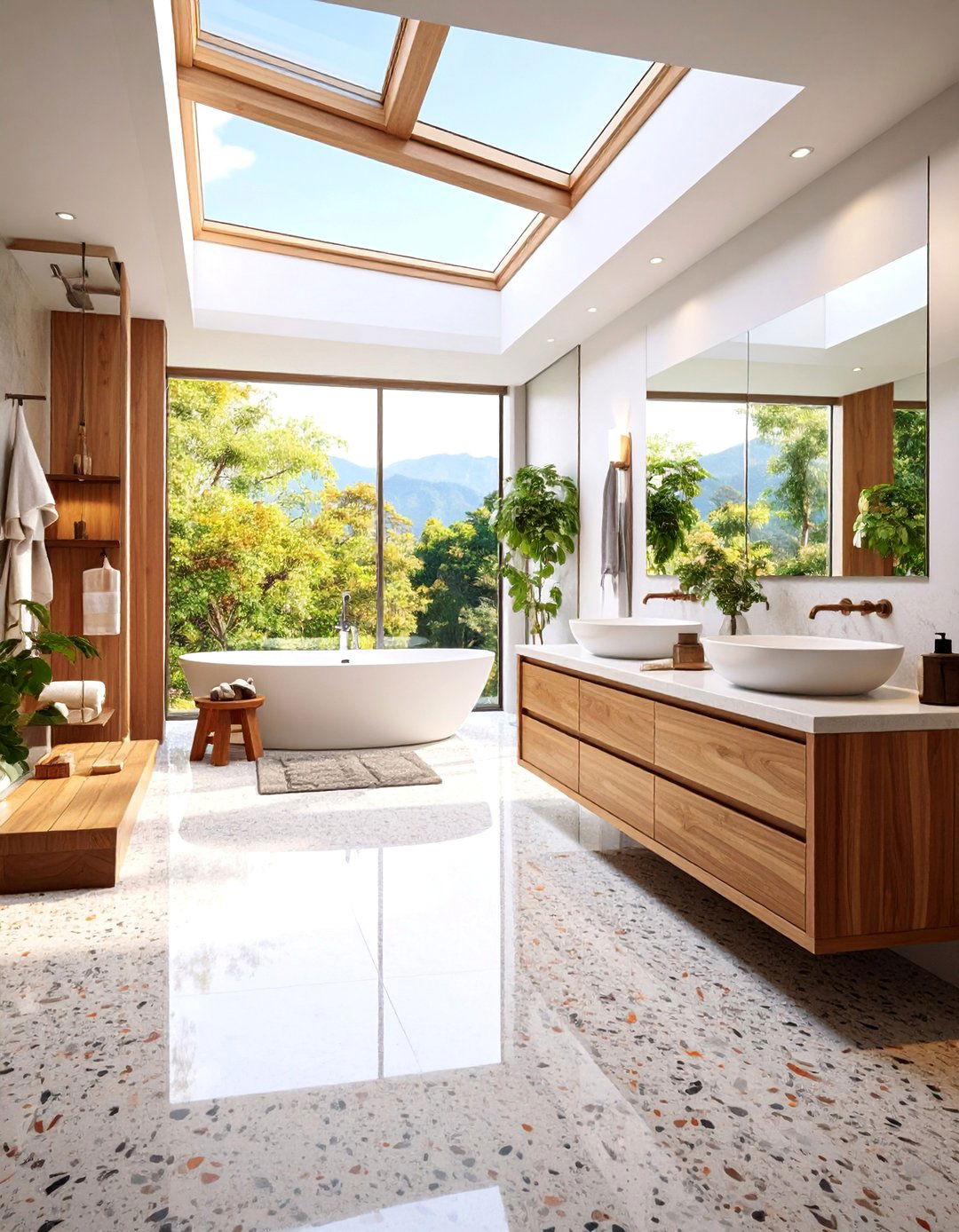



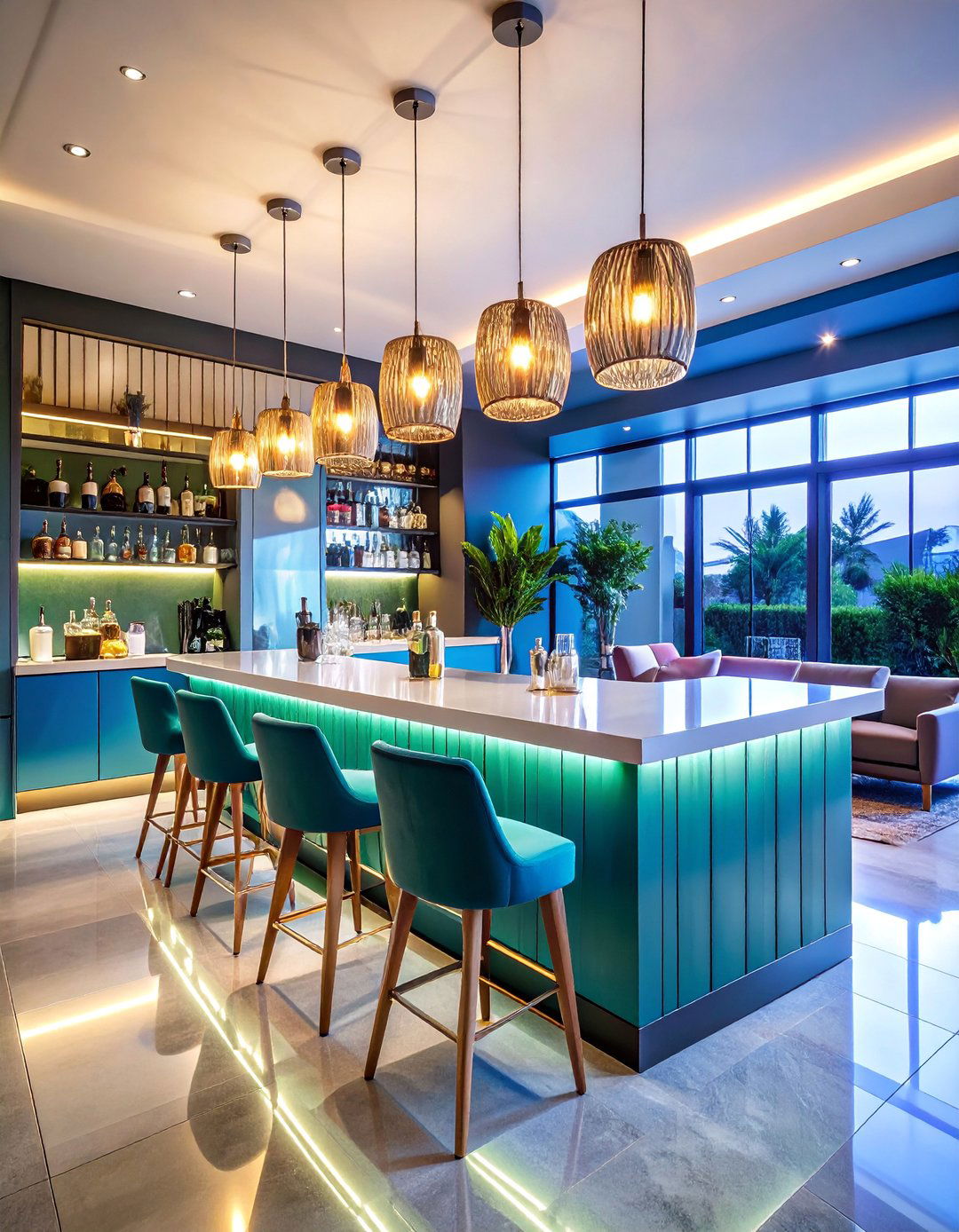
Leave a Reply